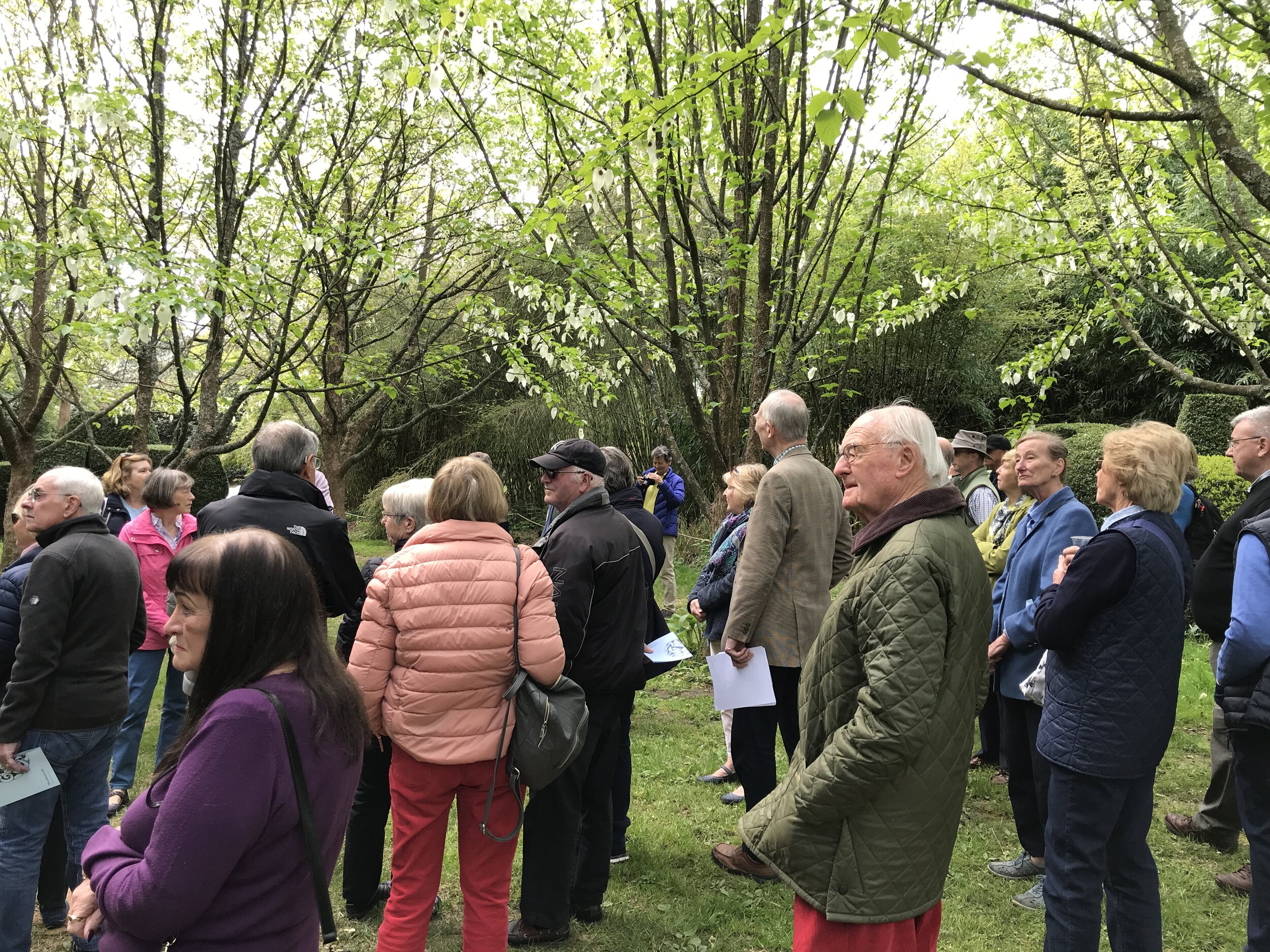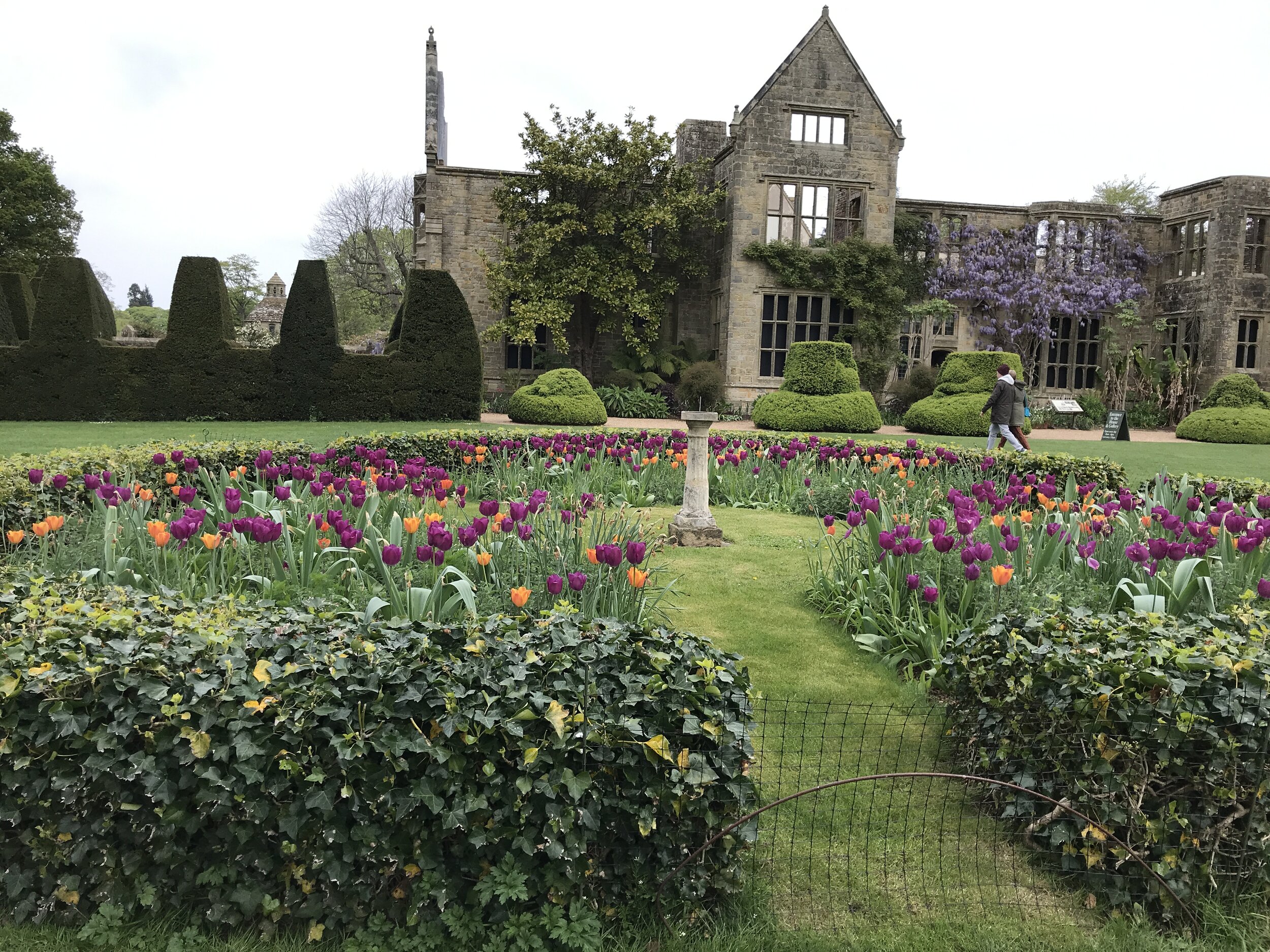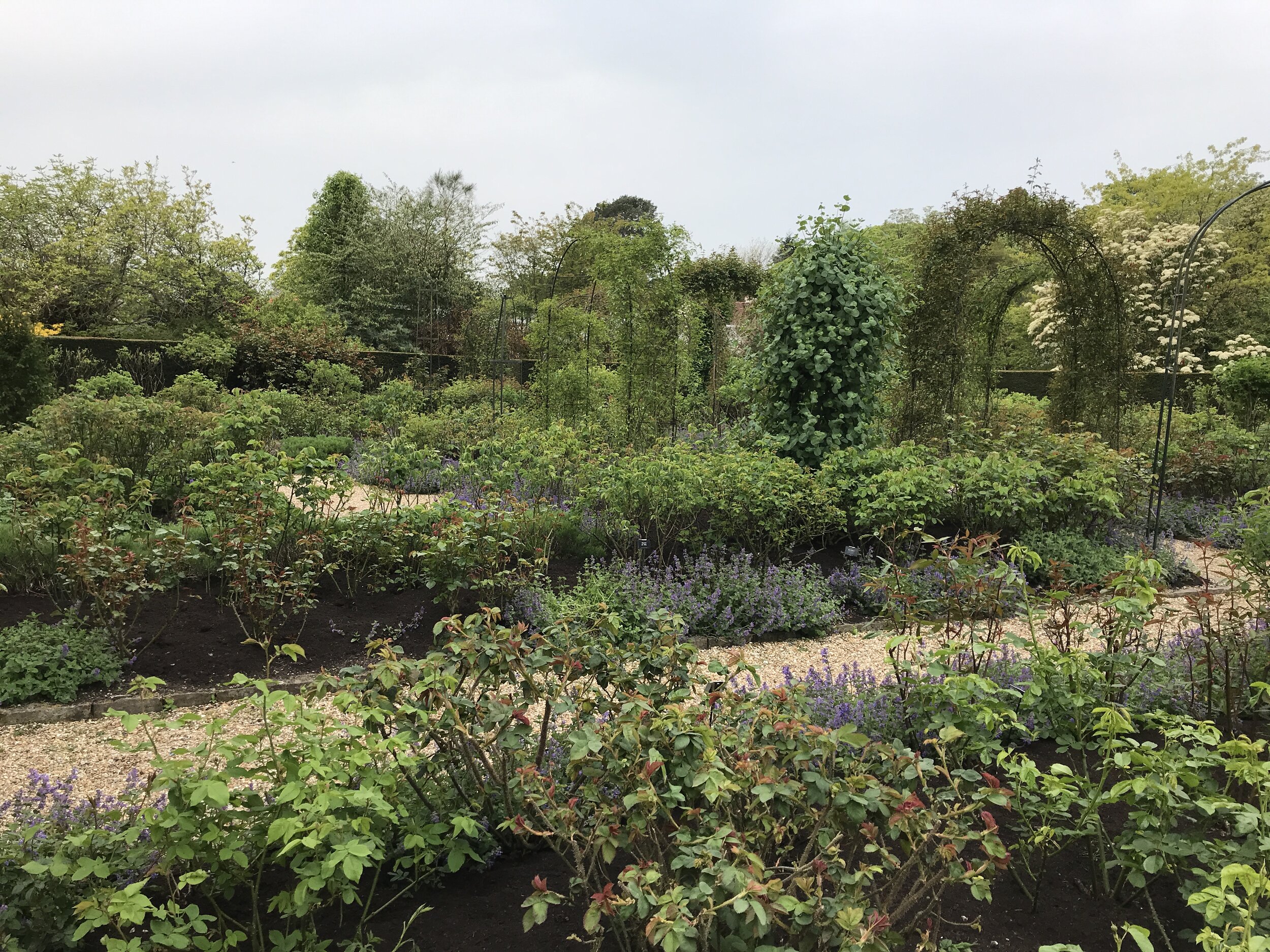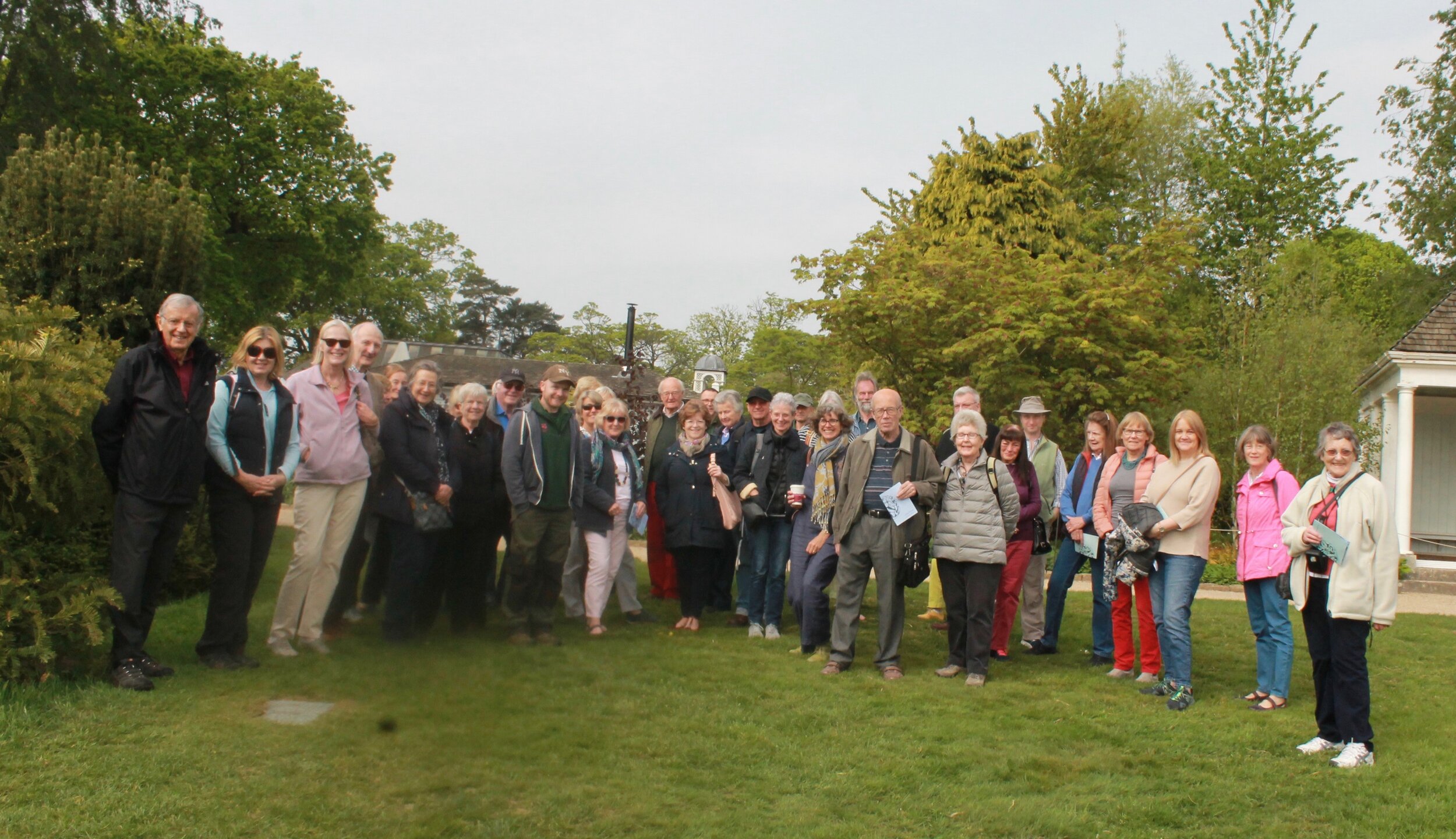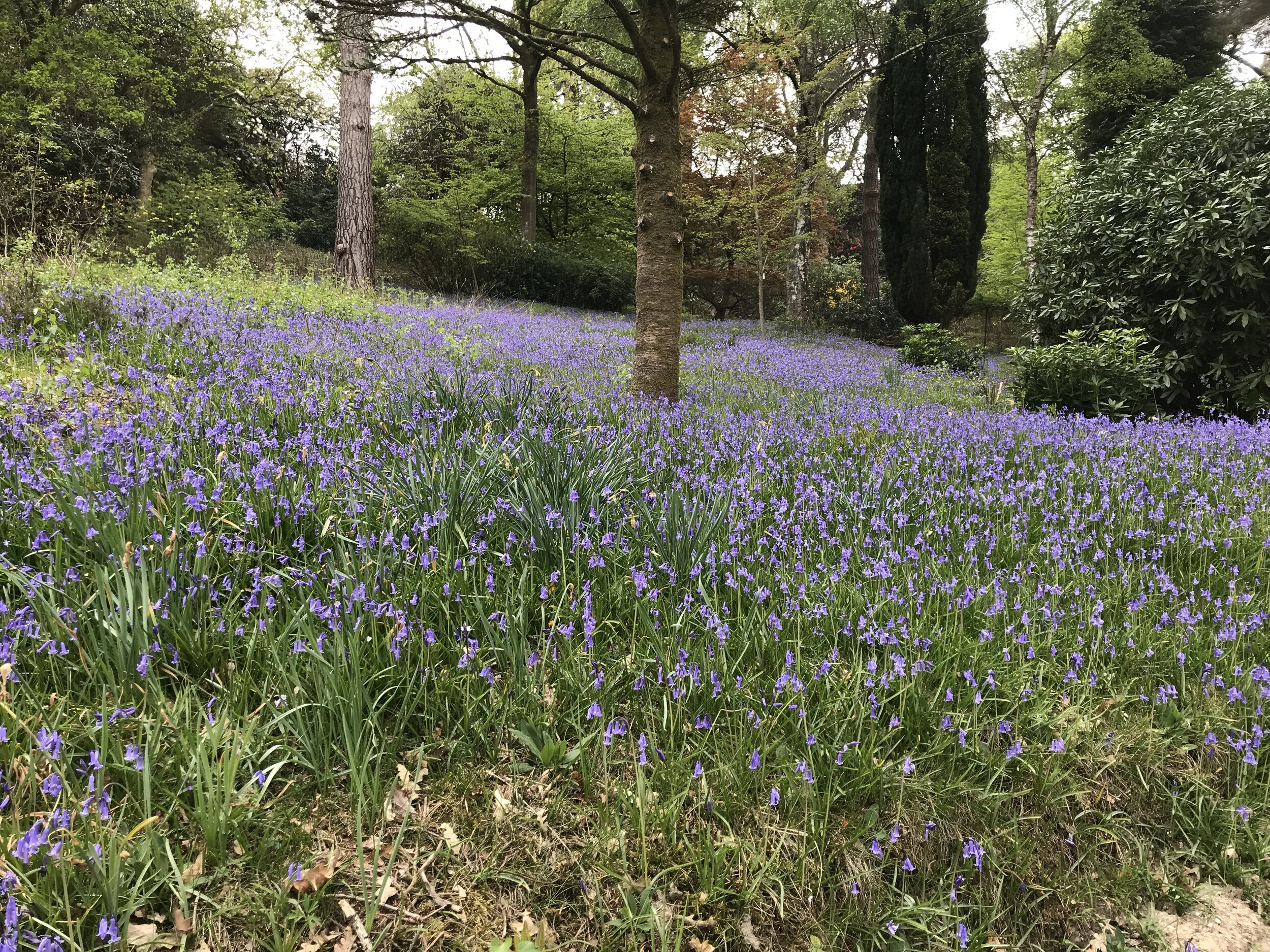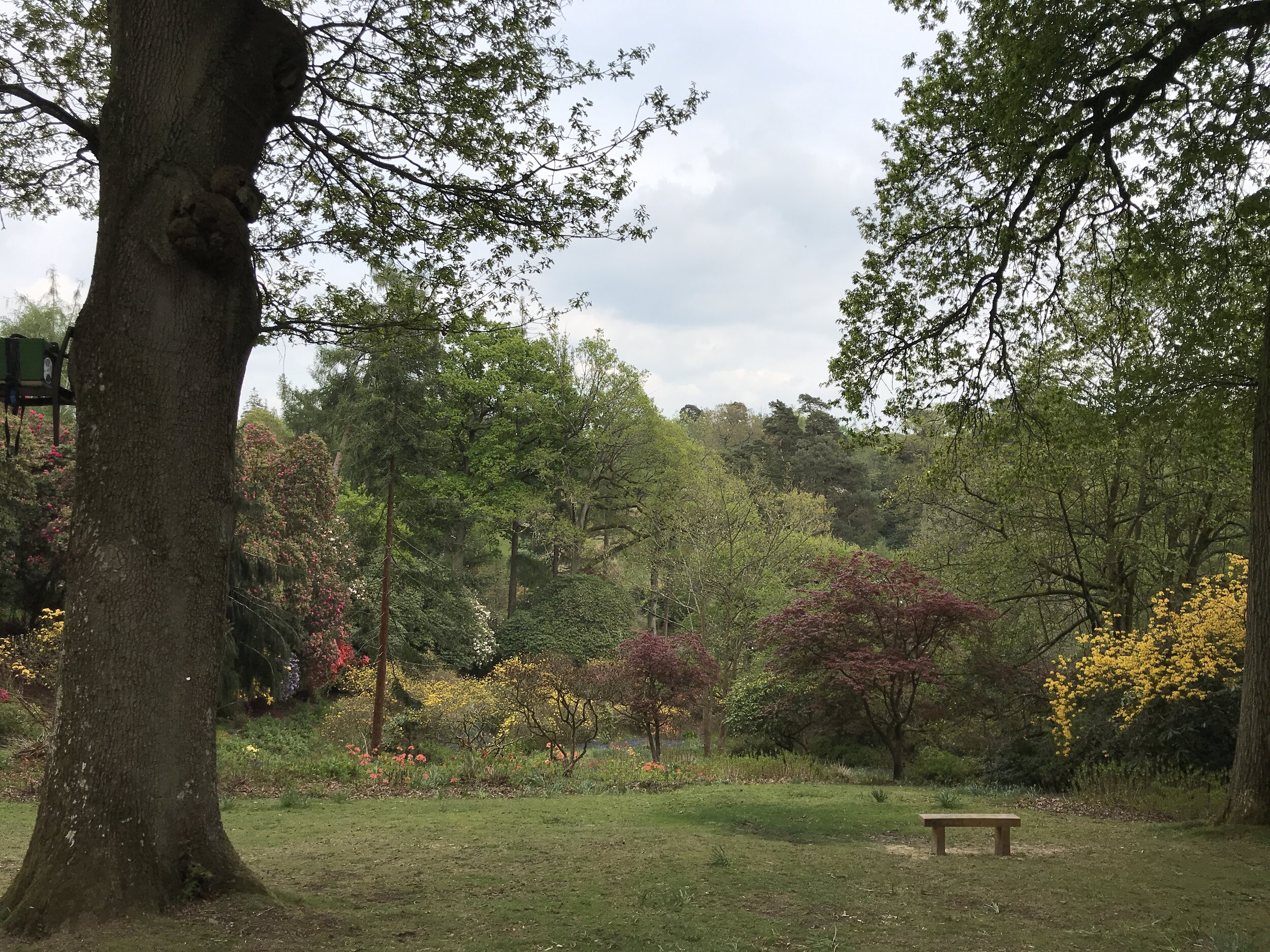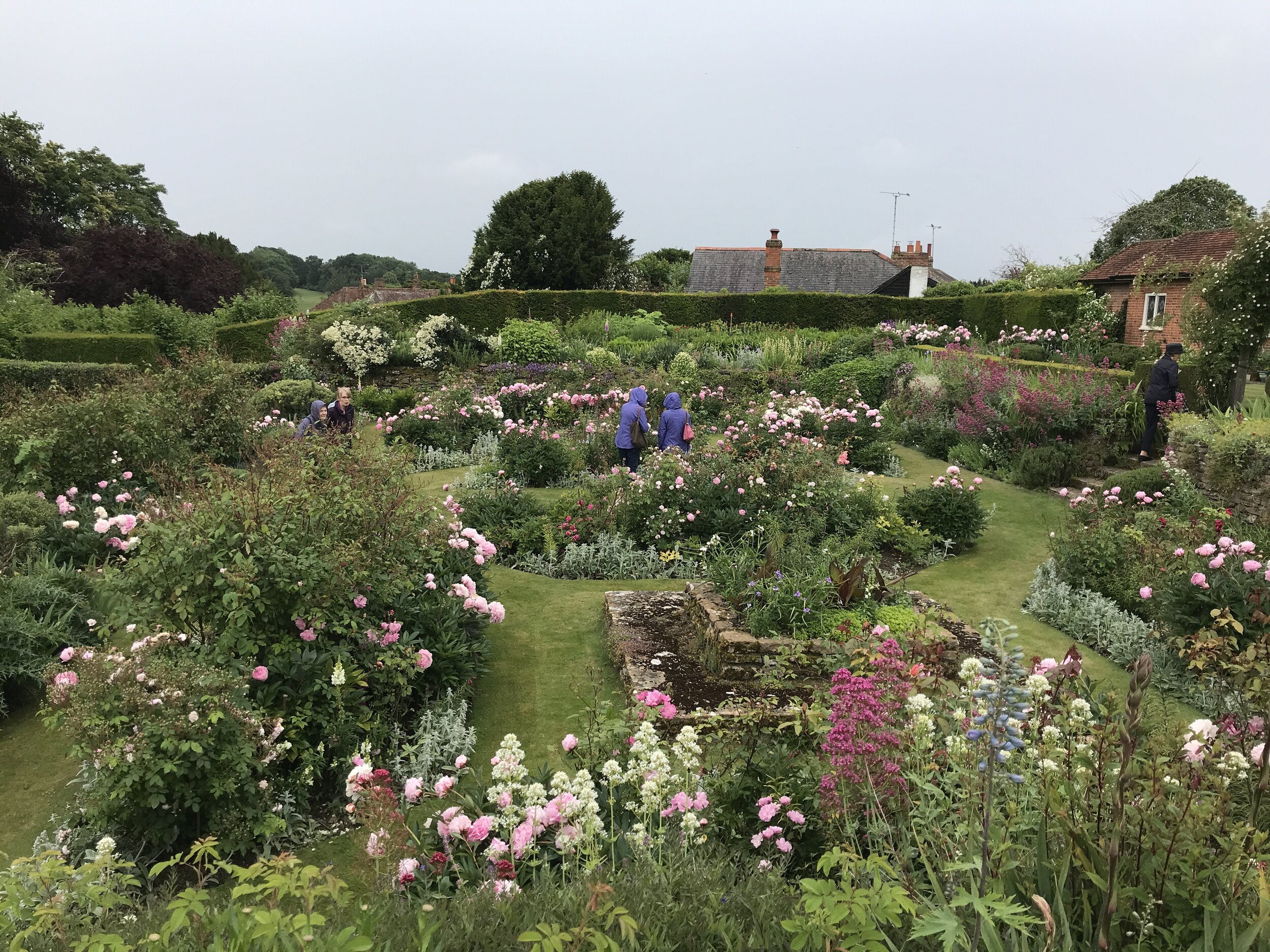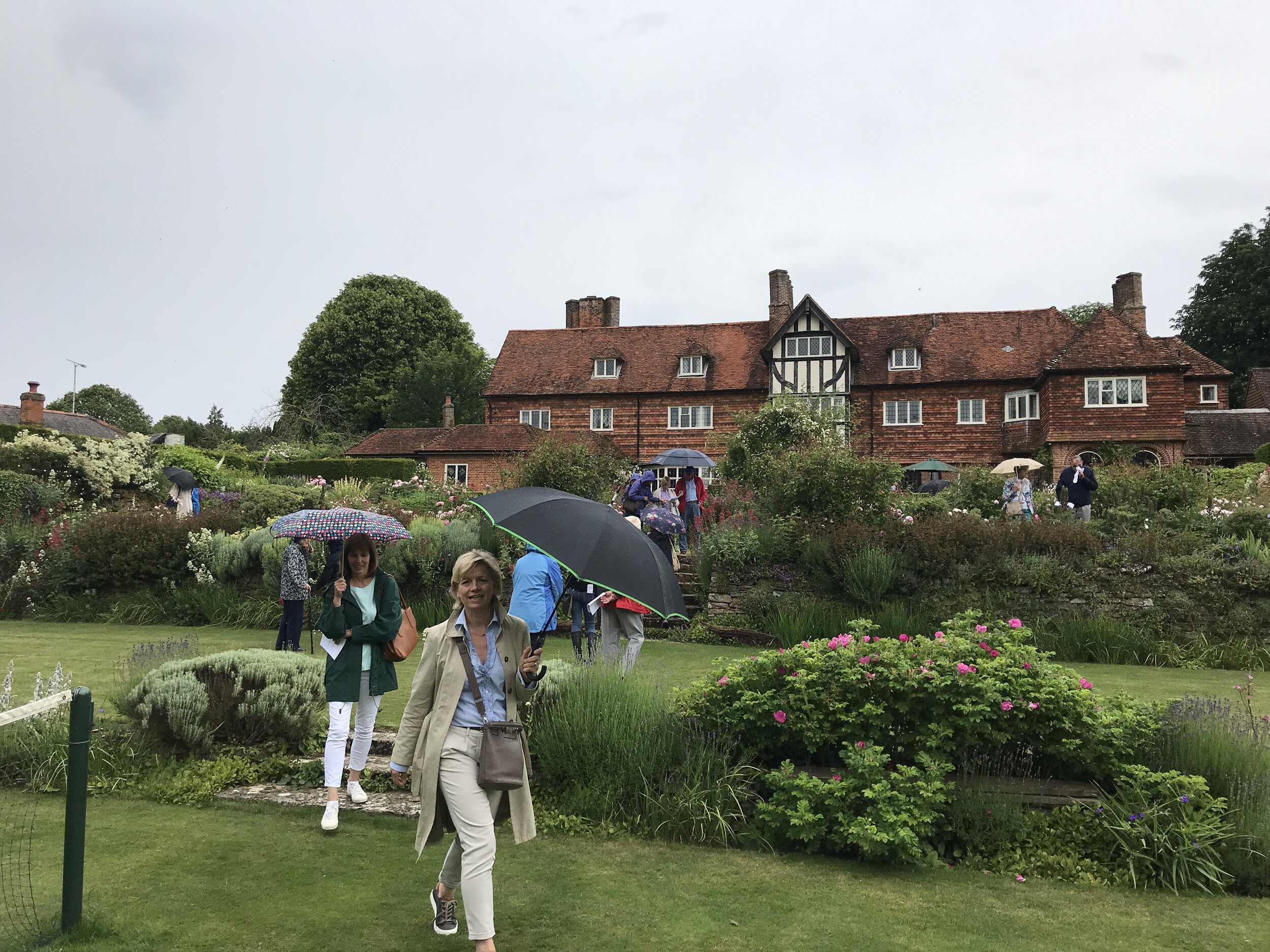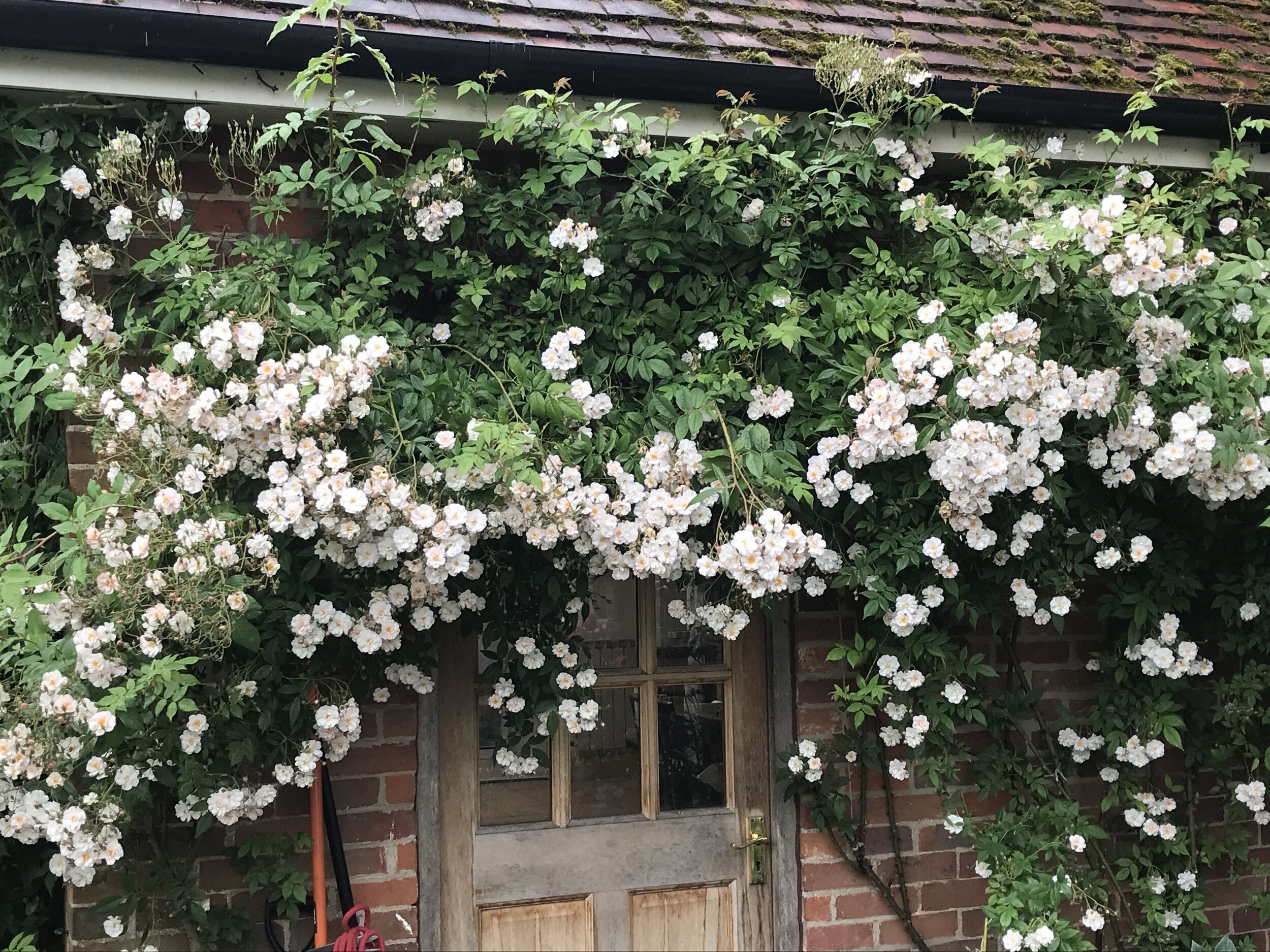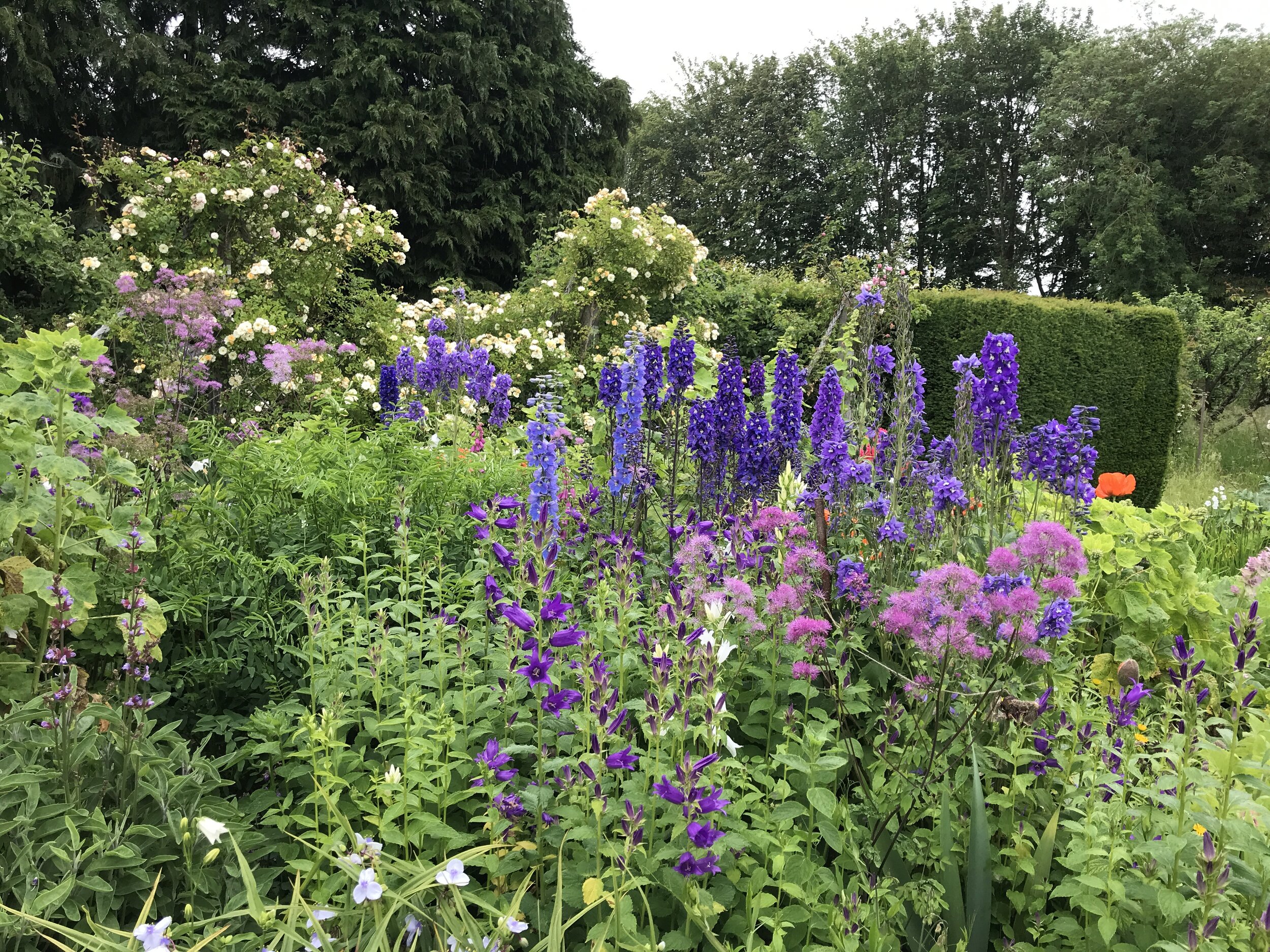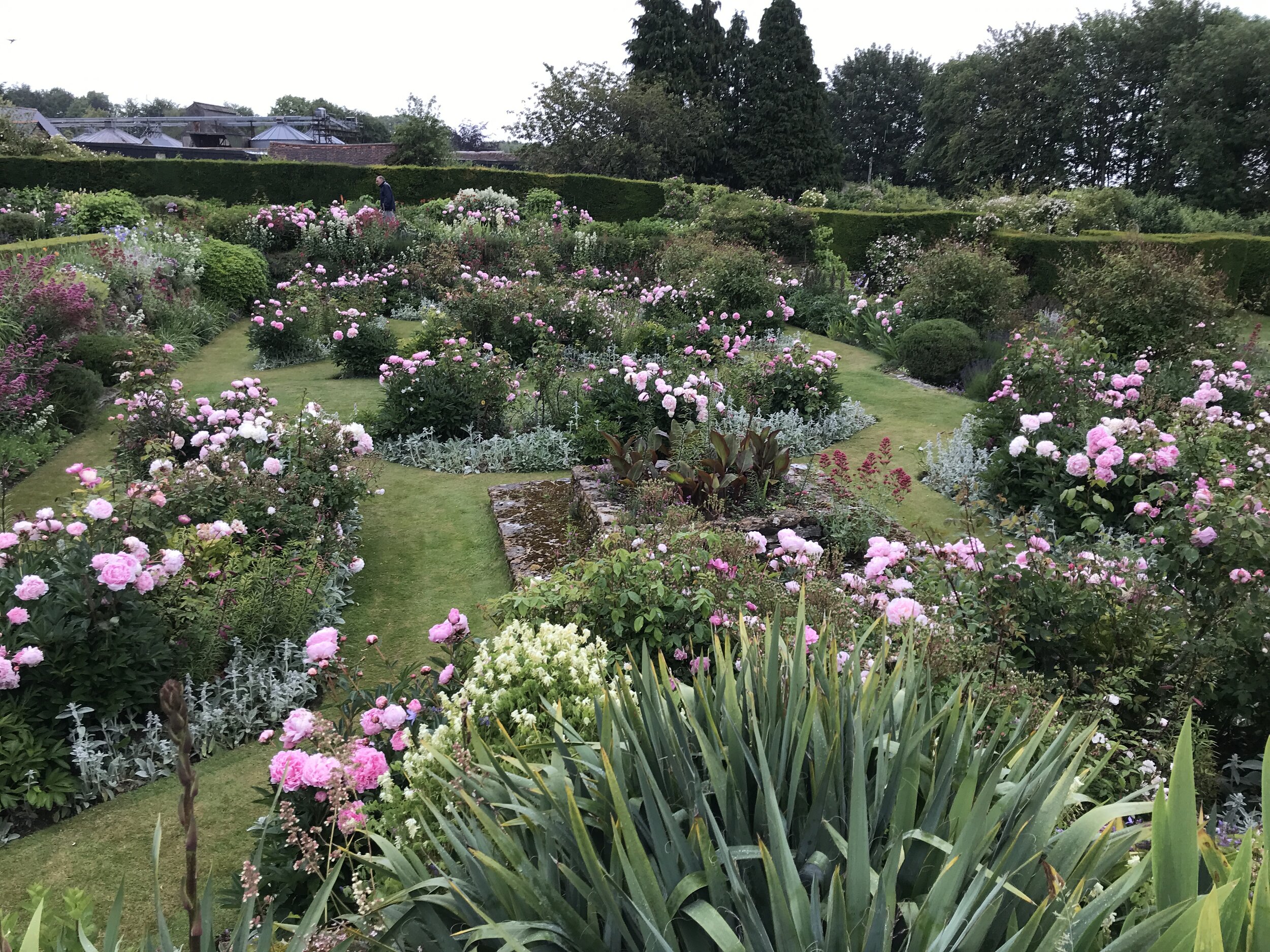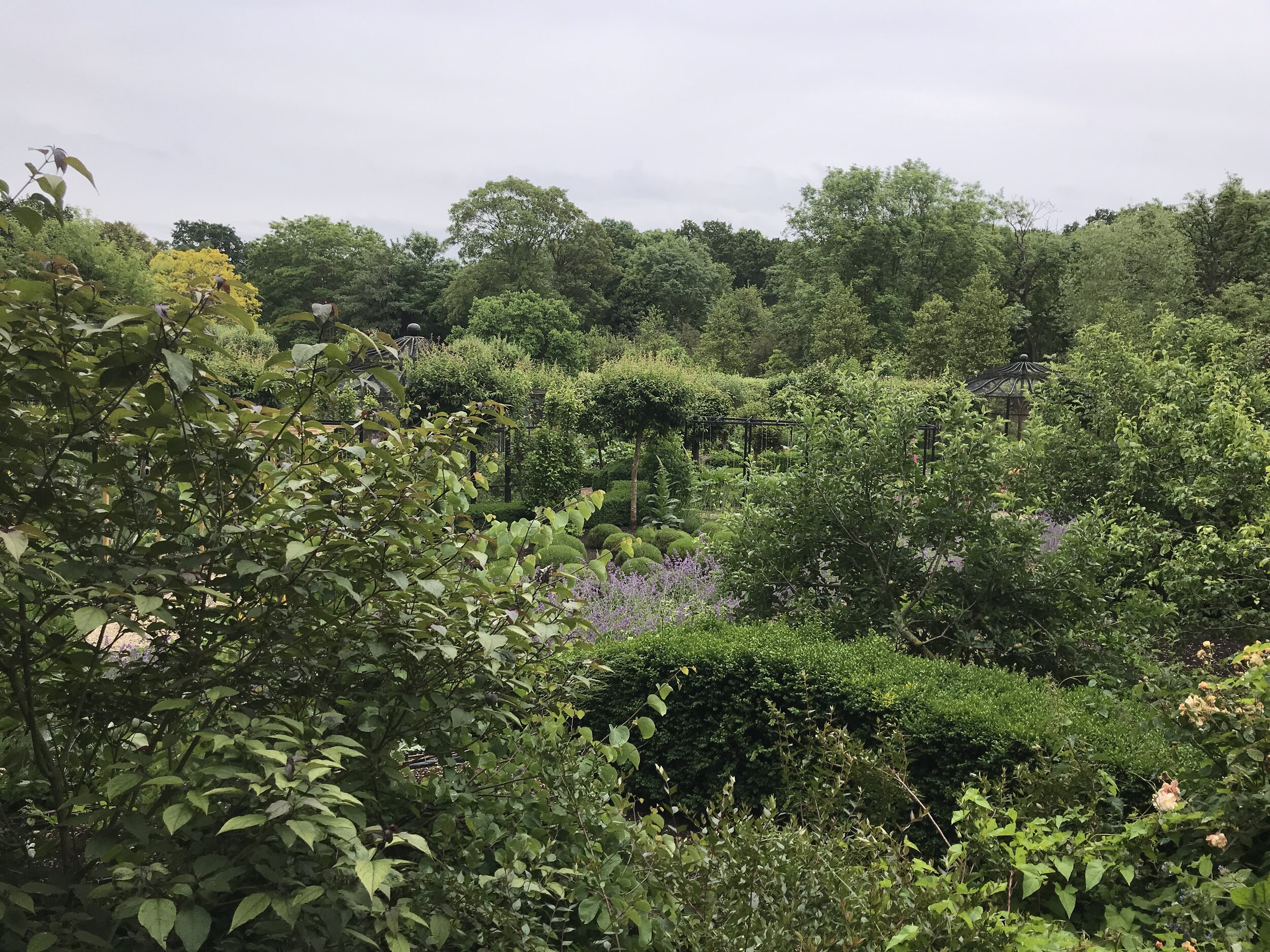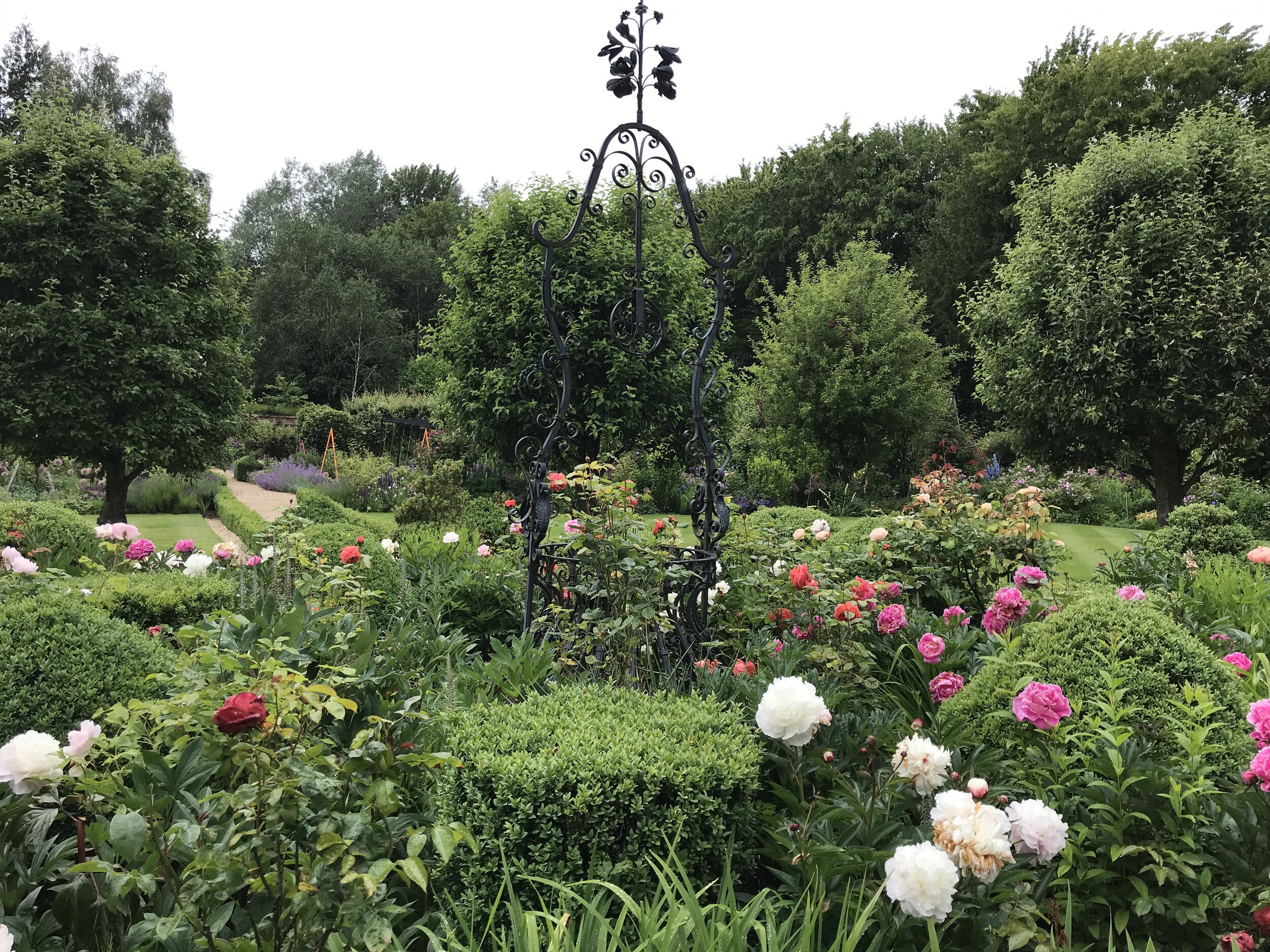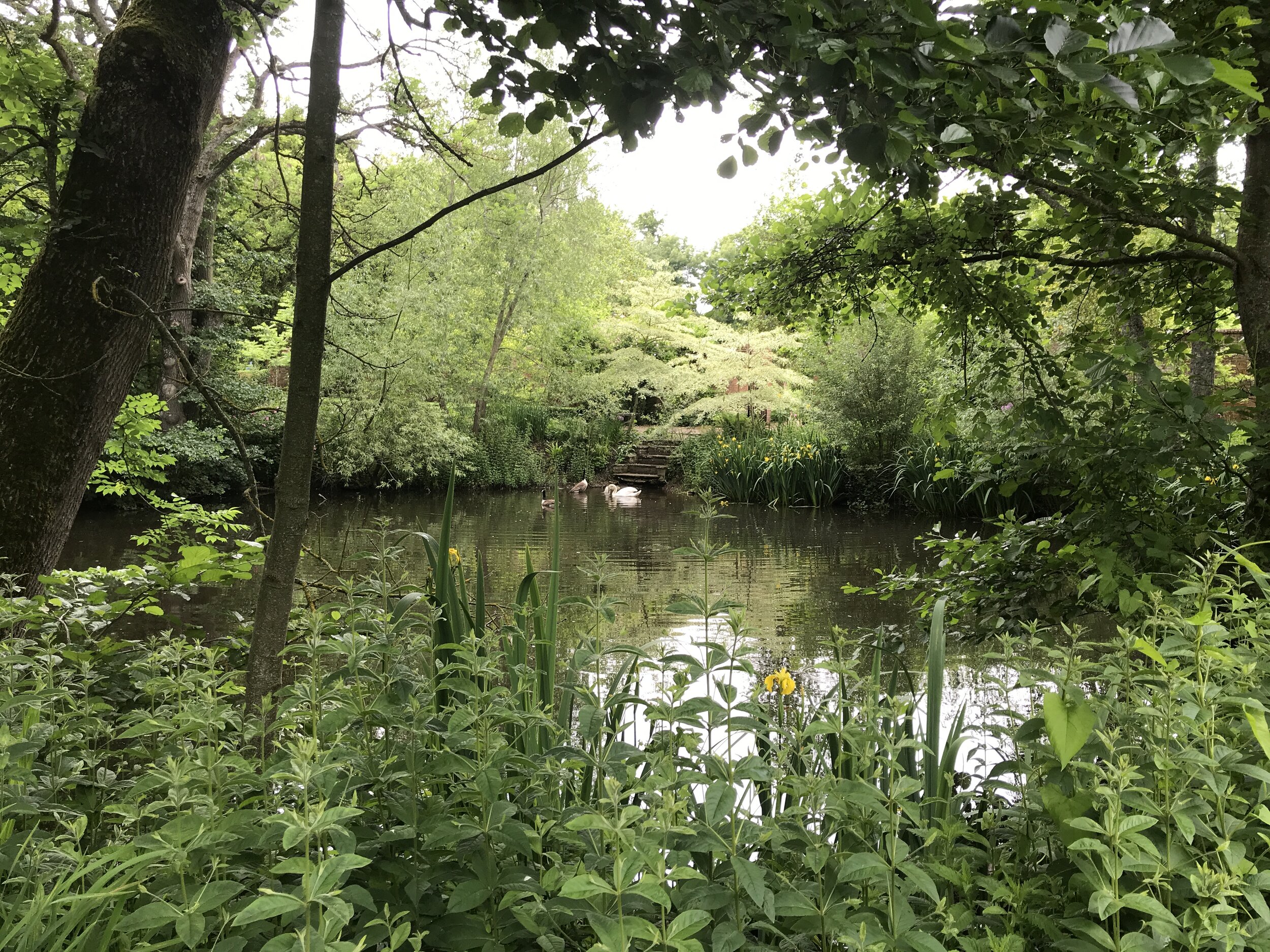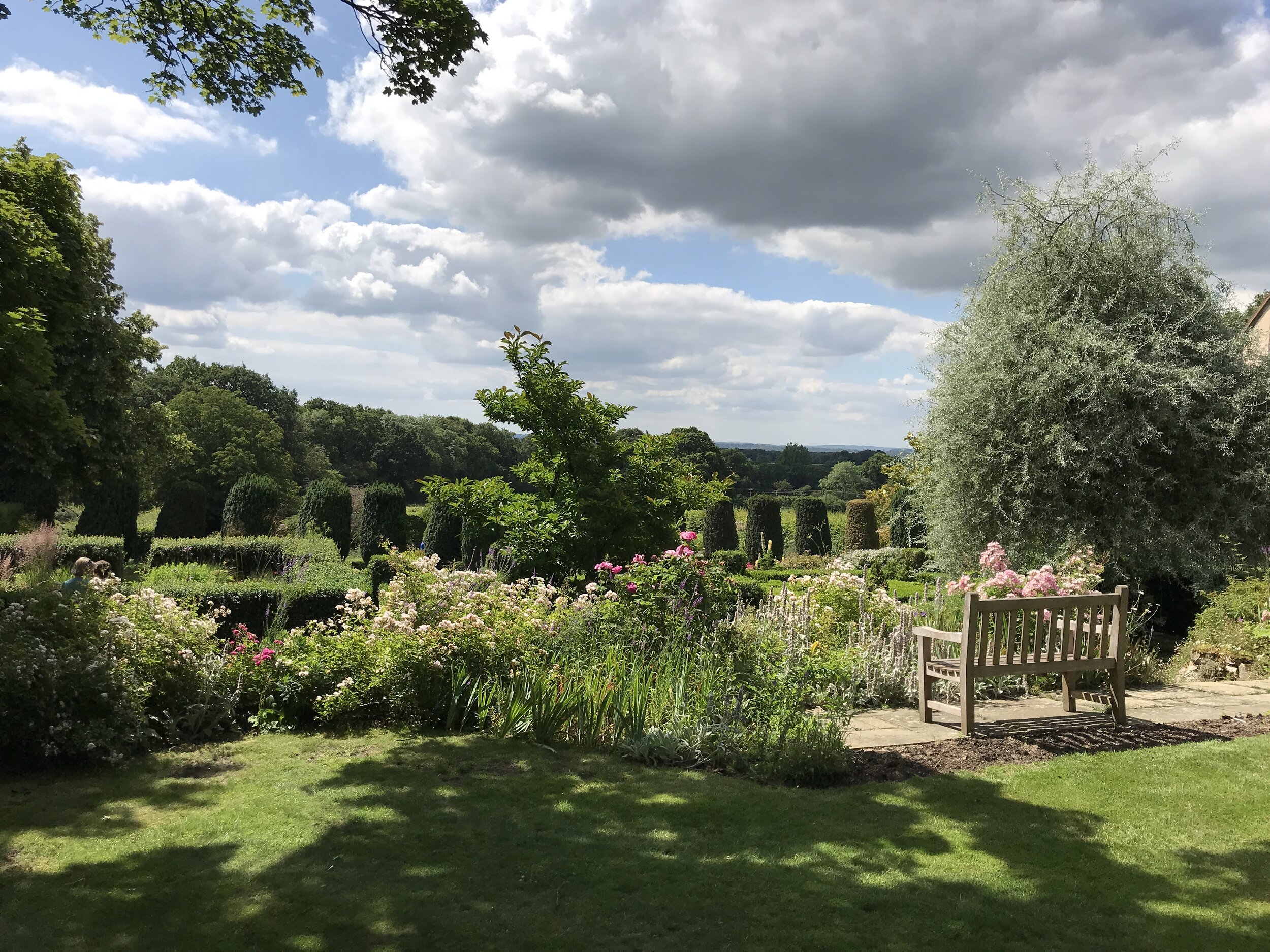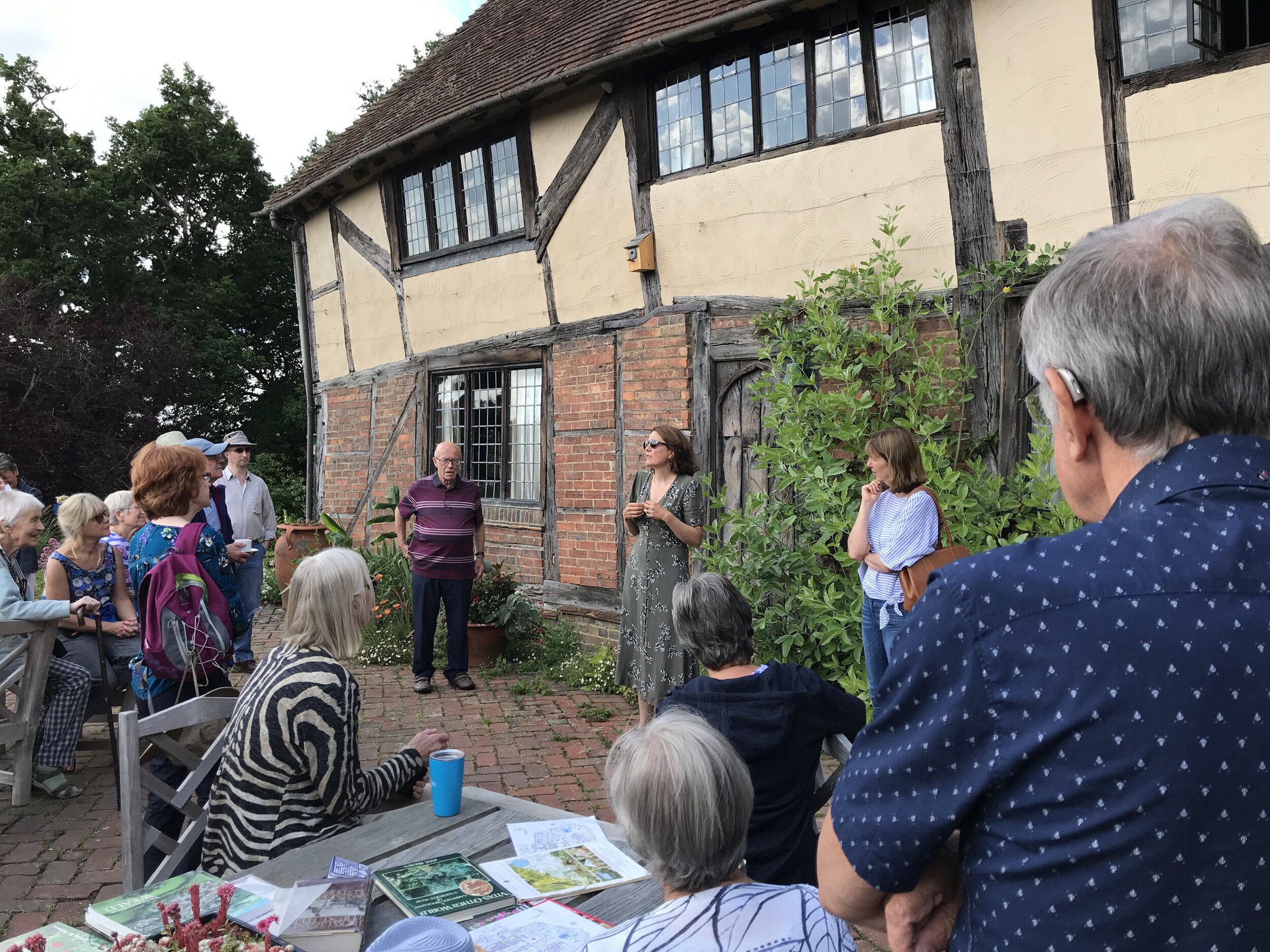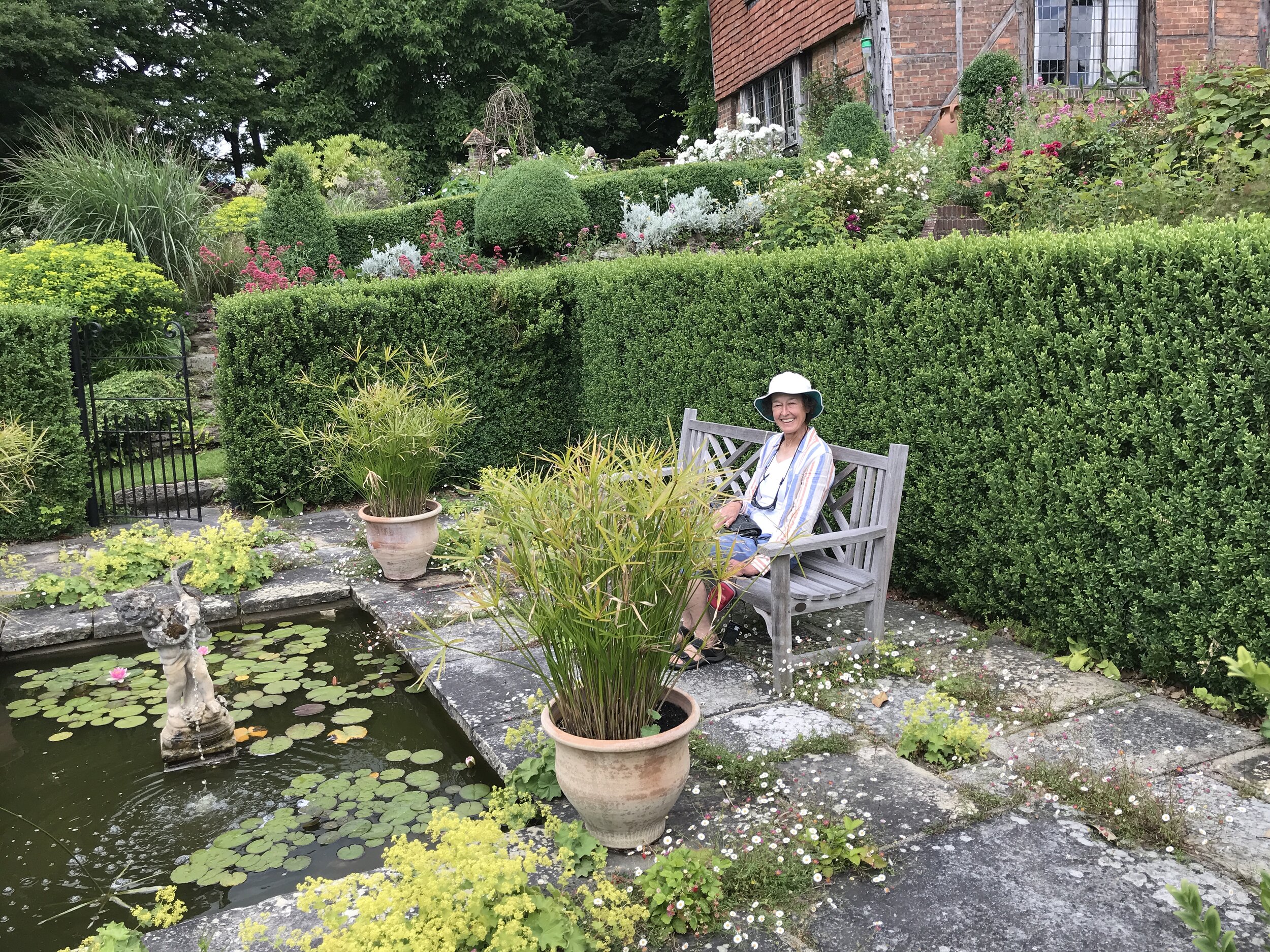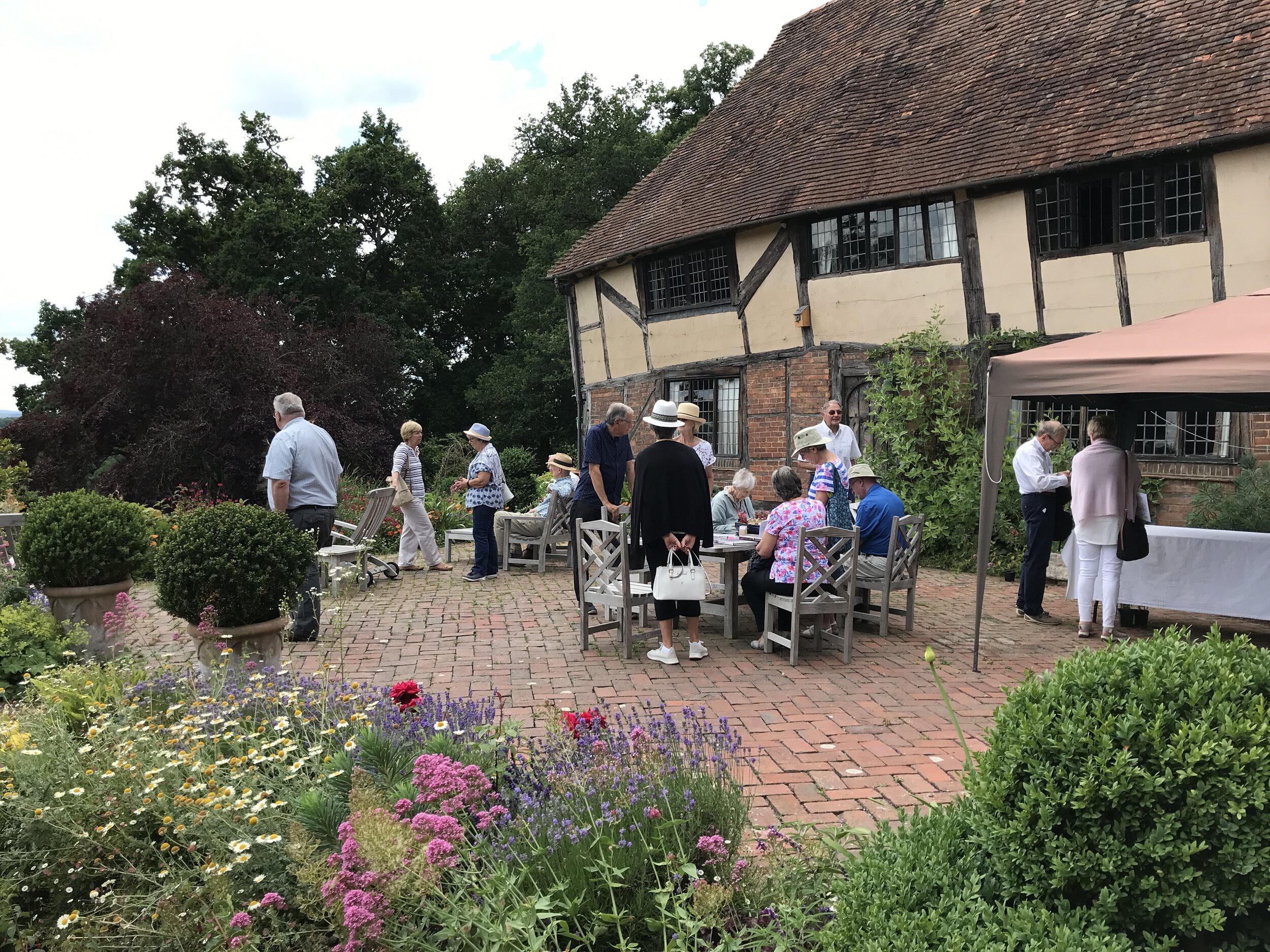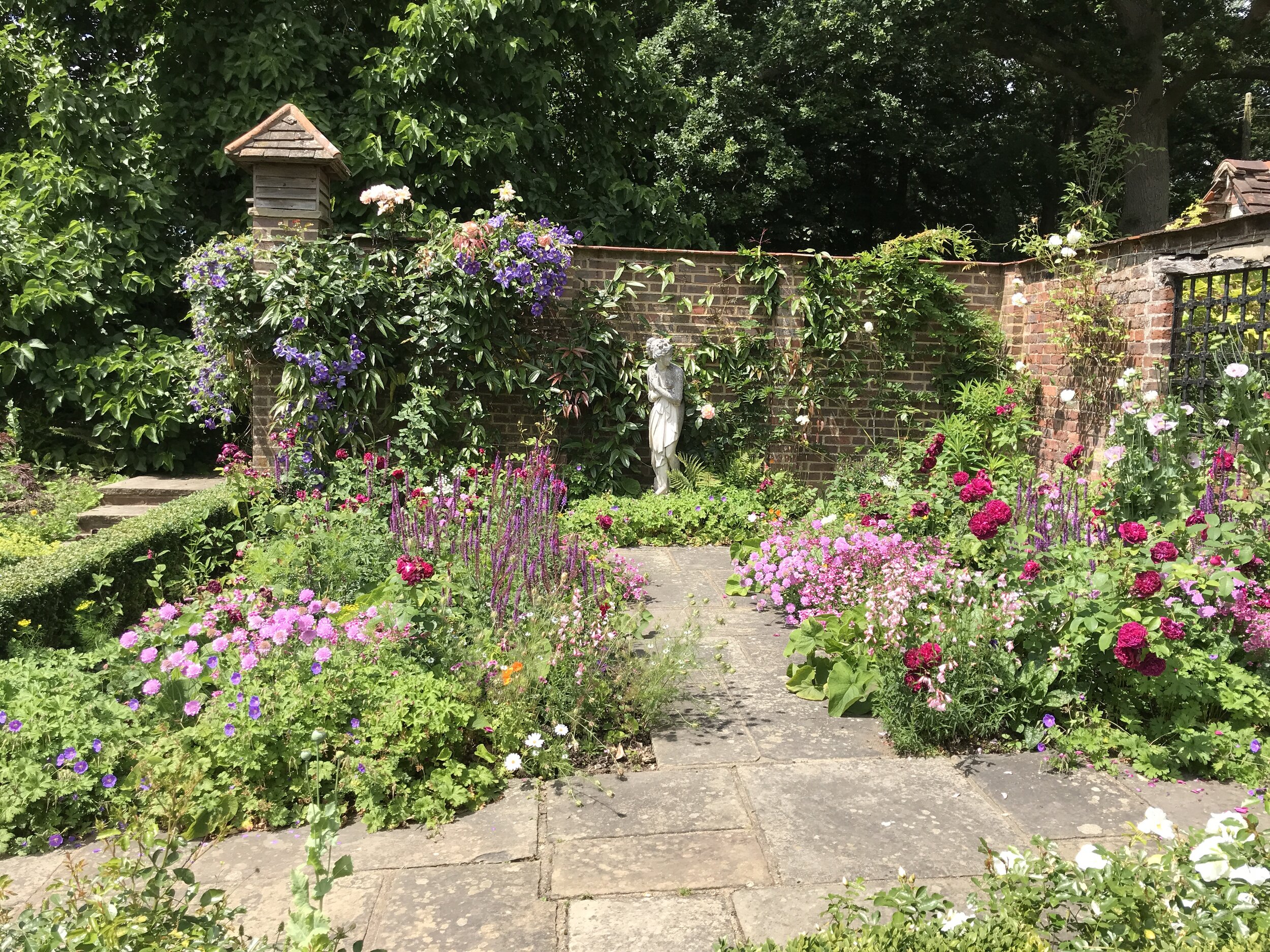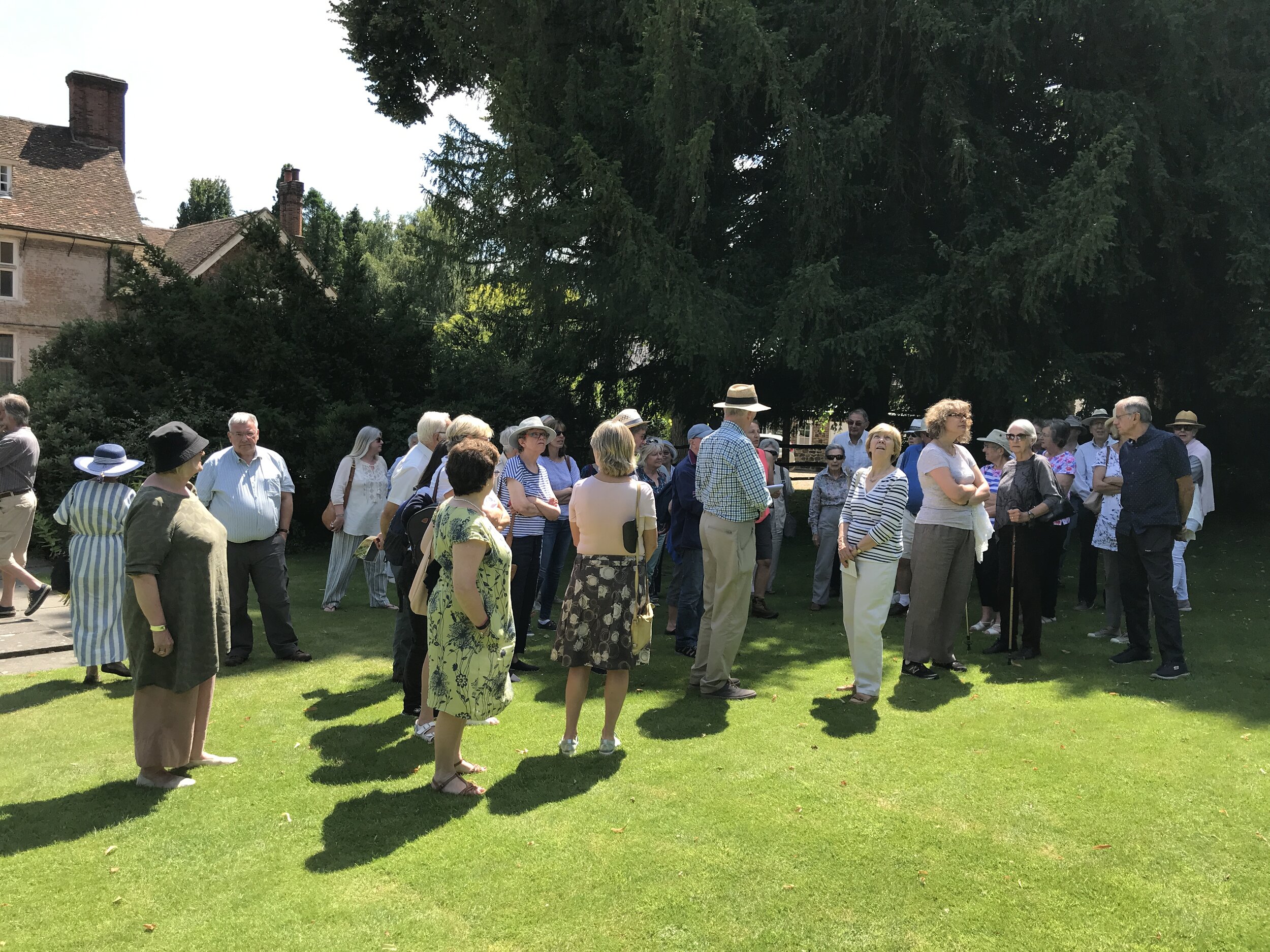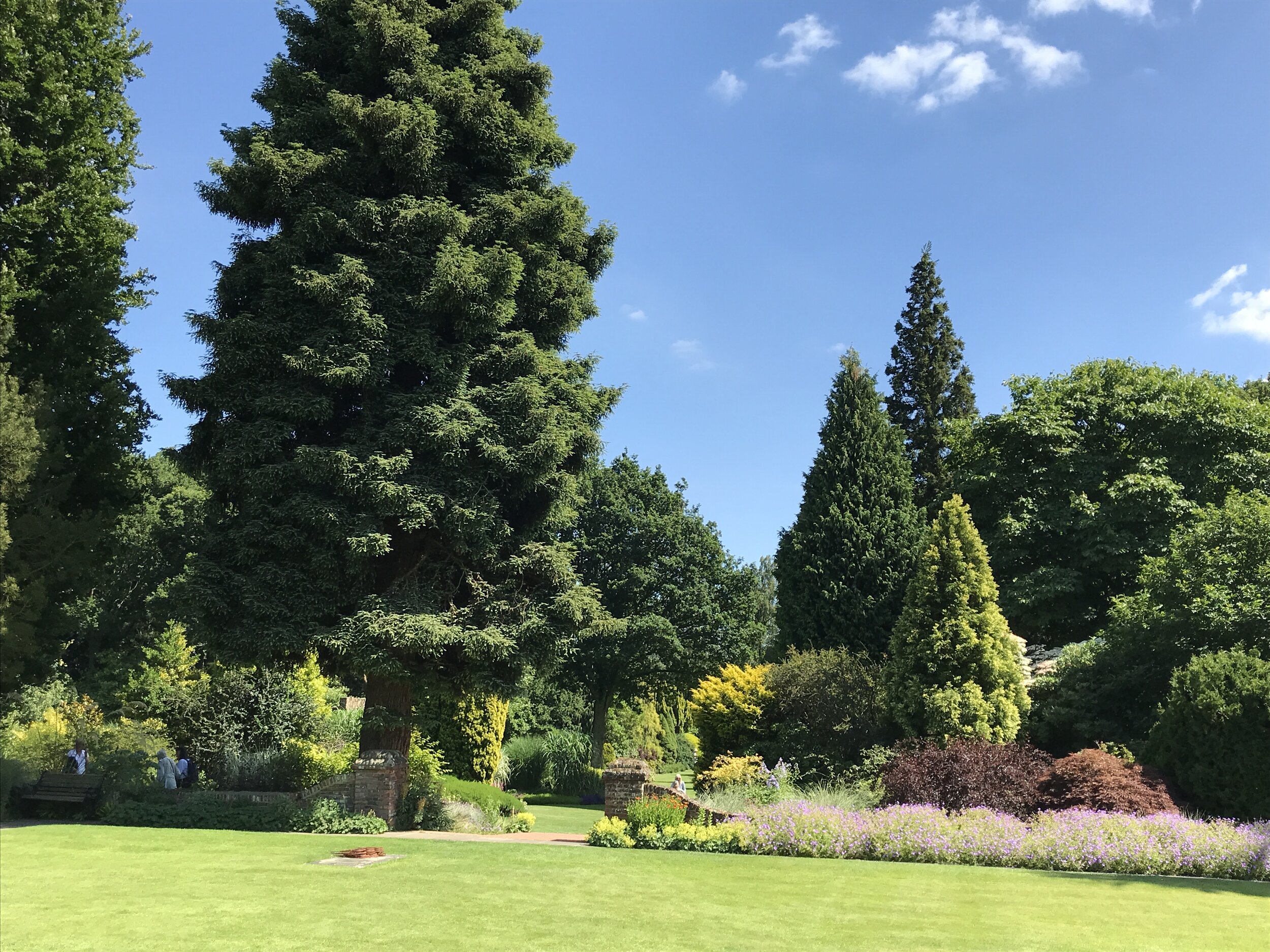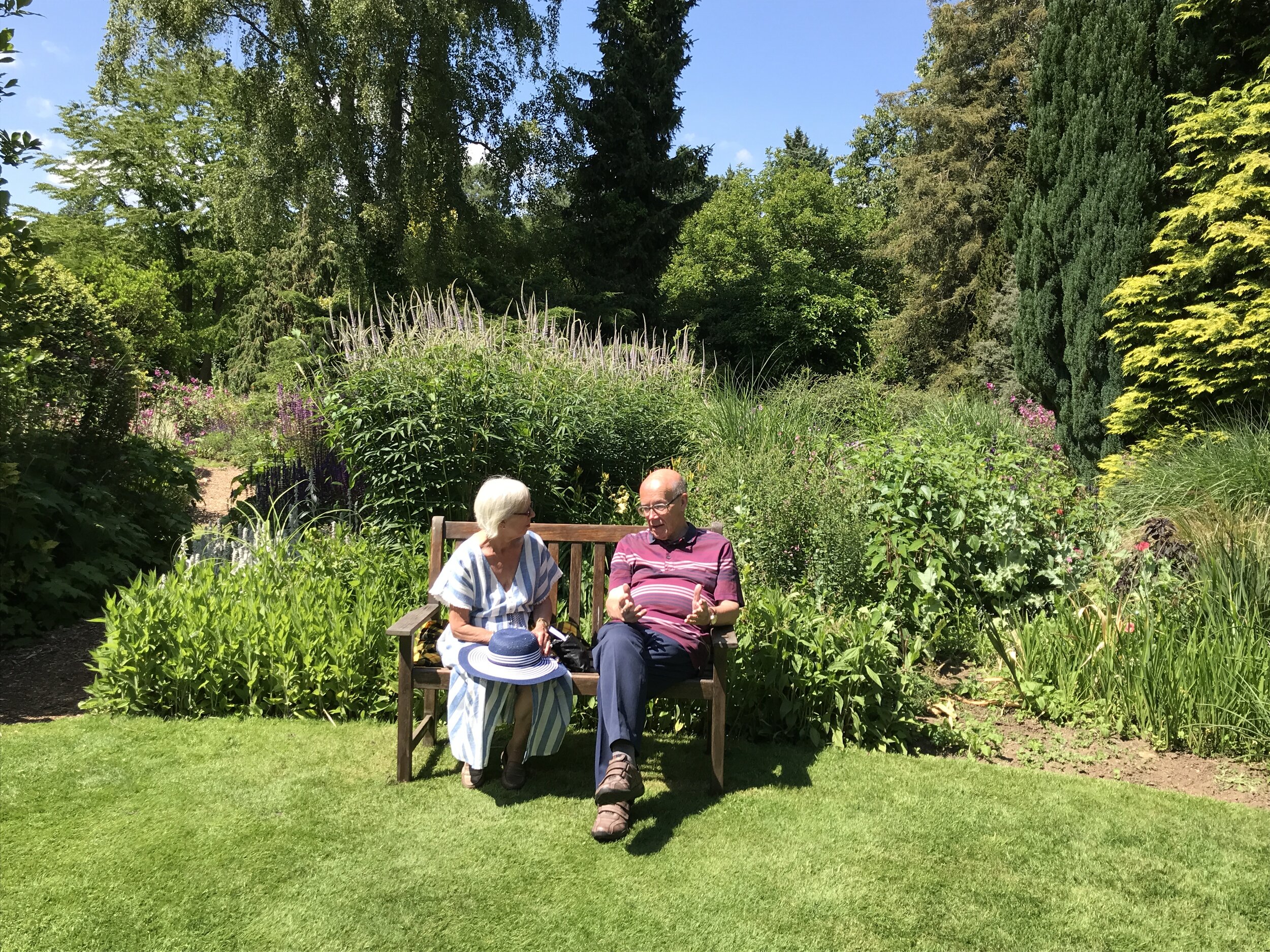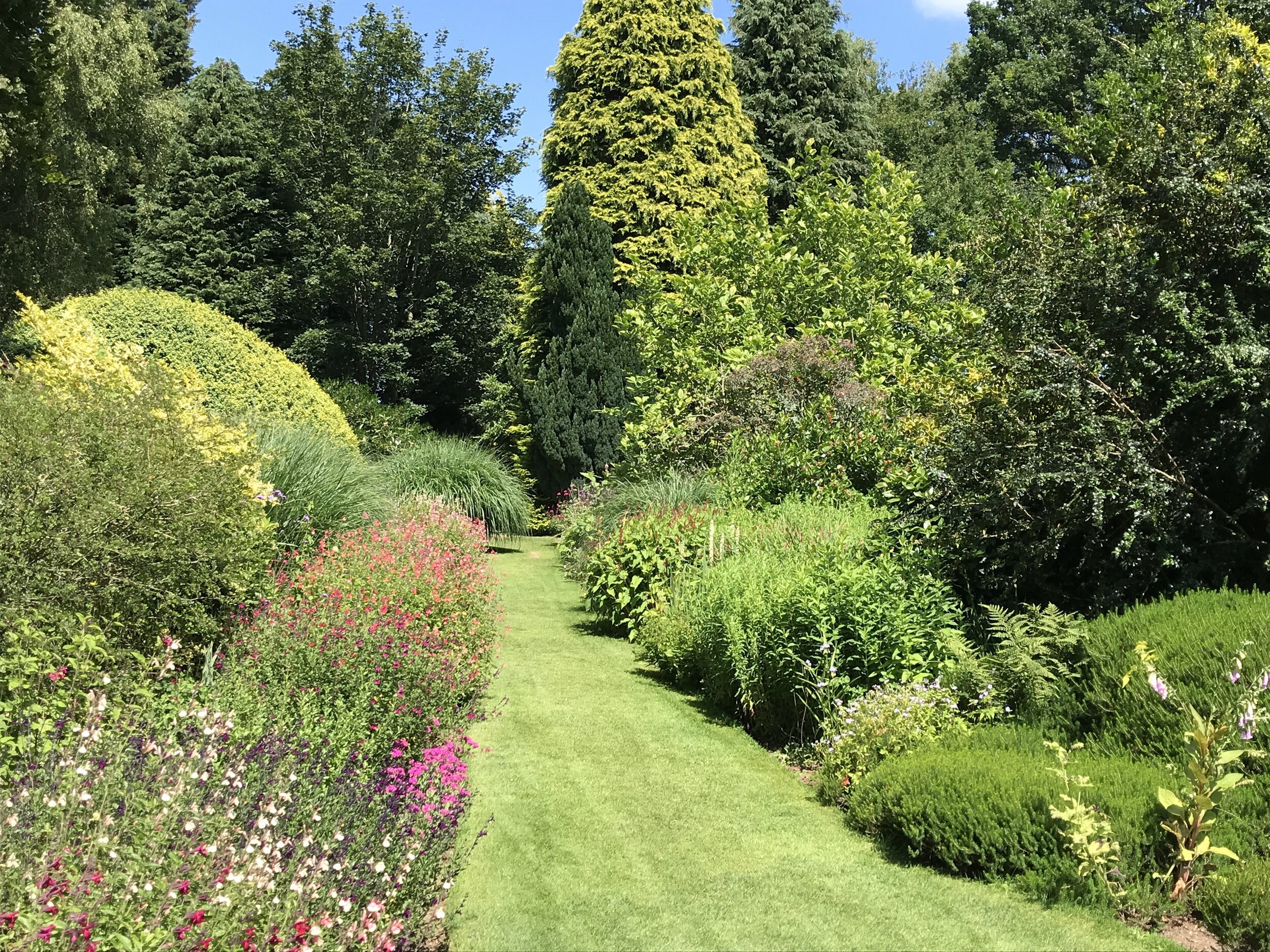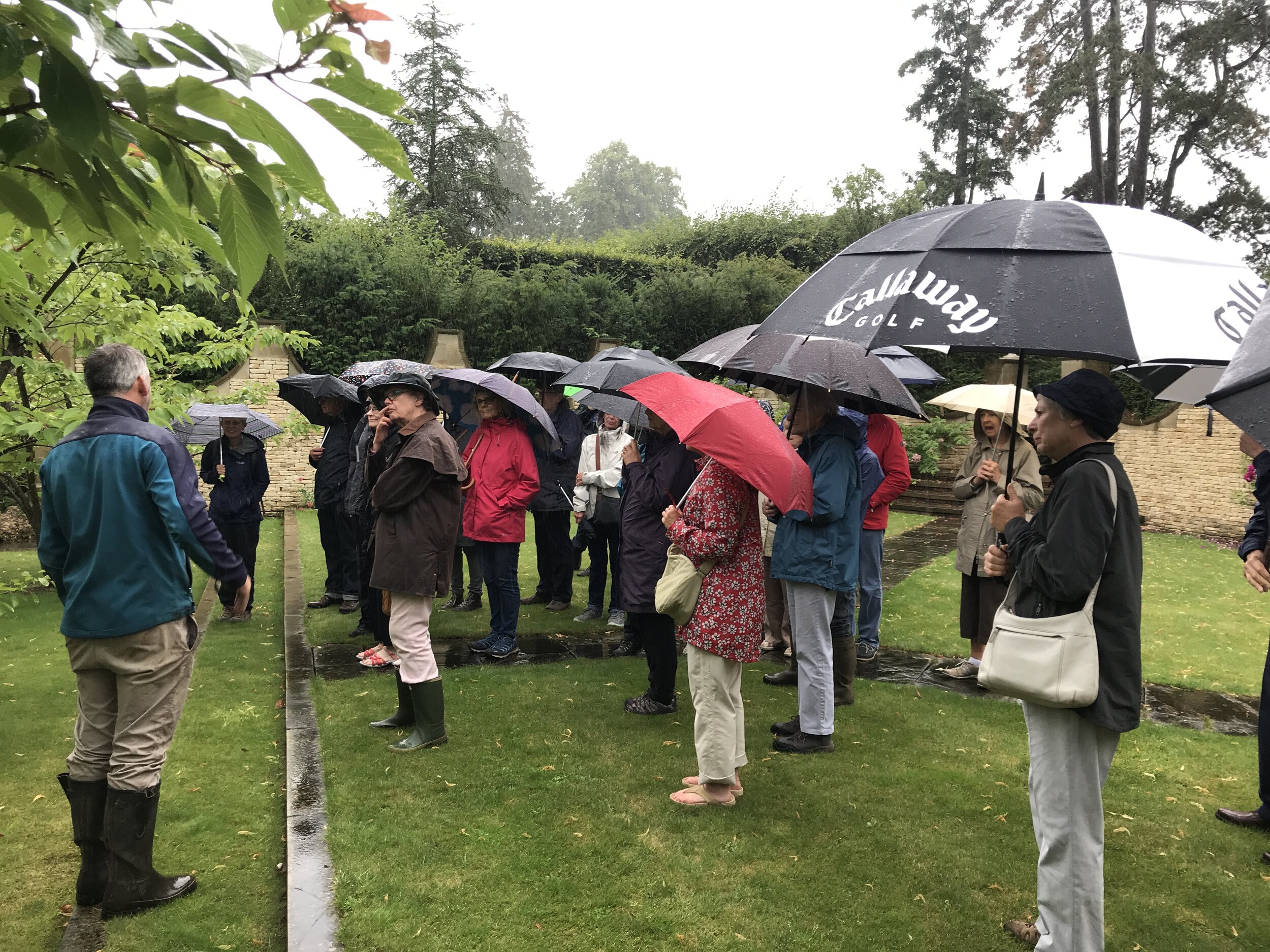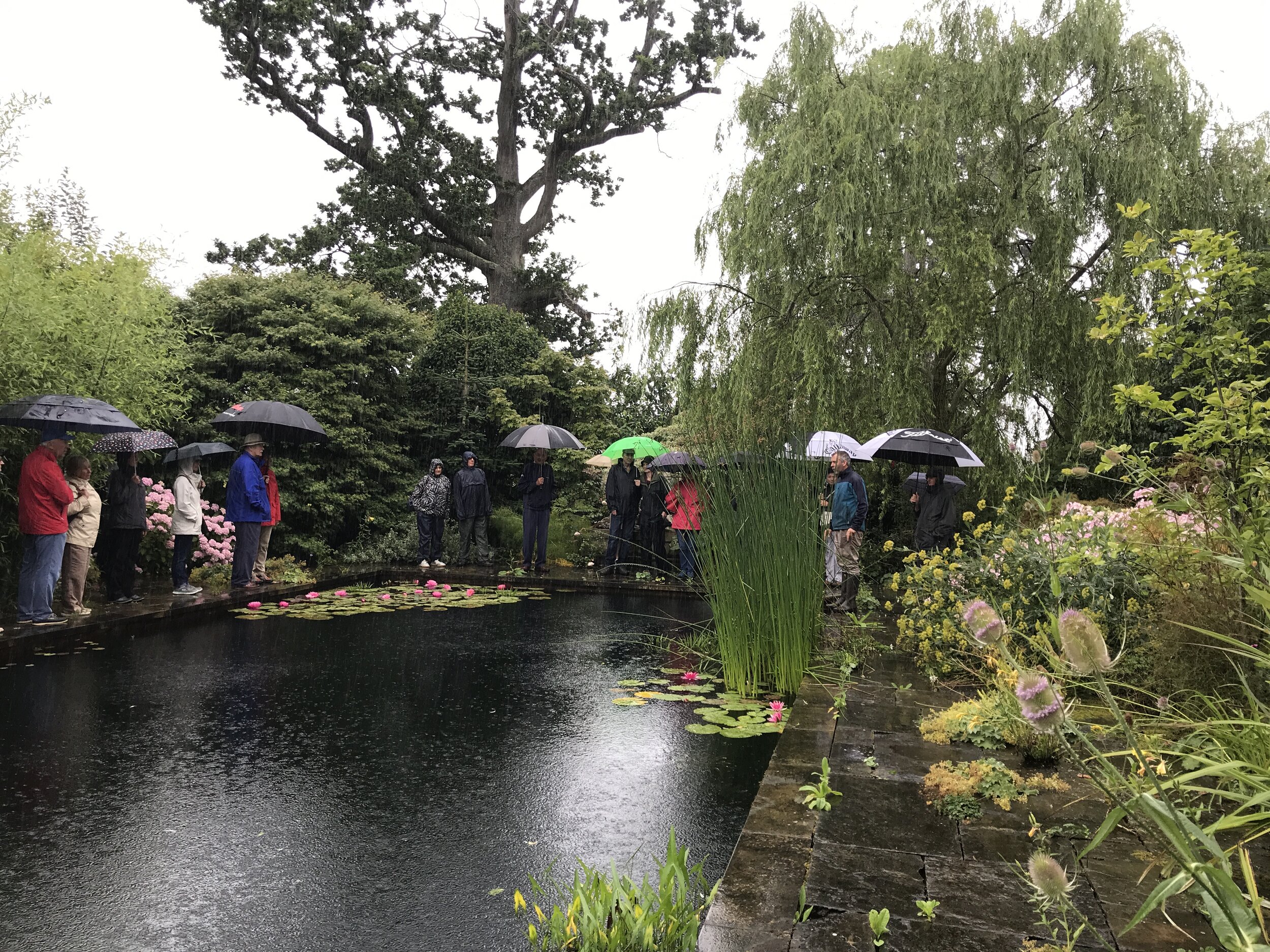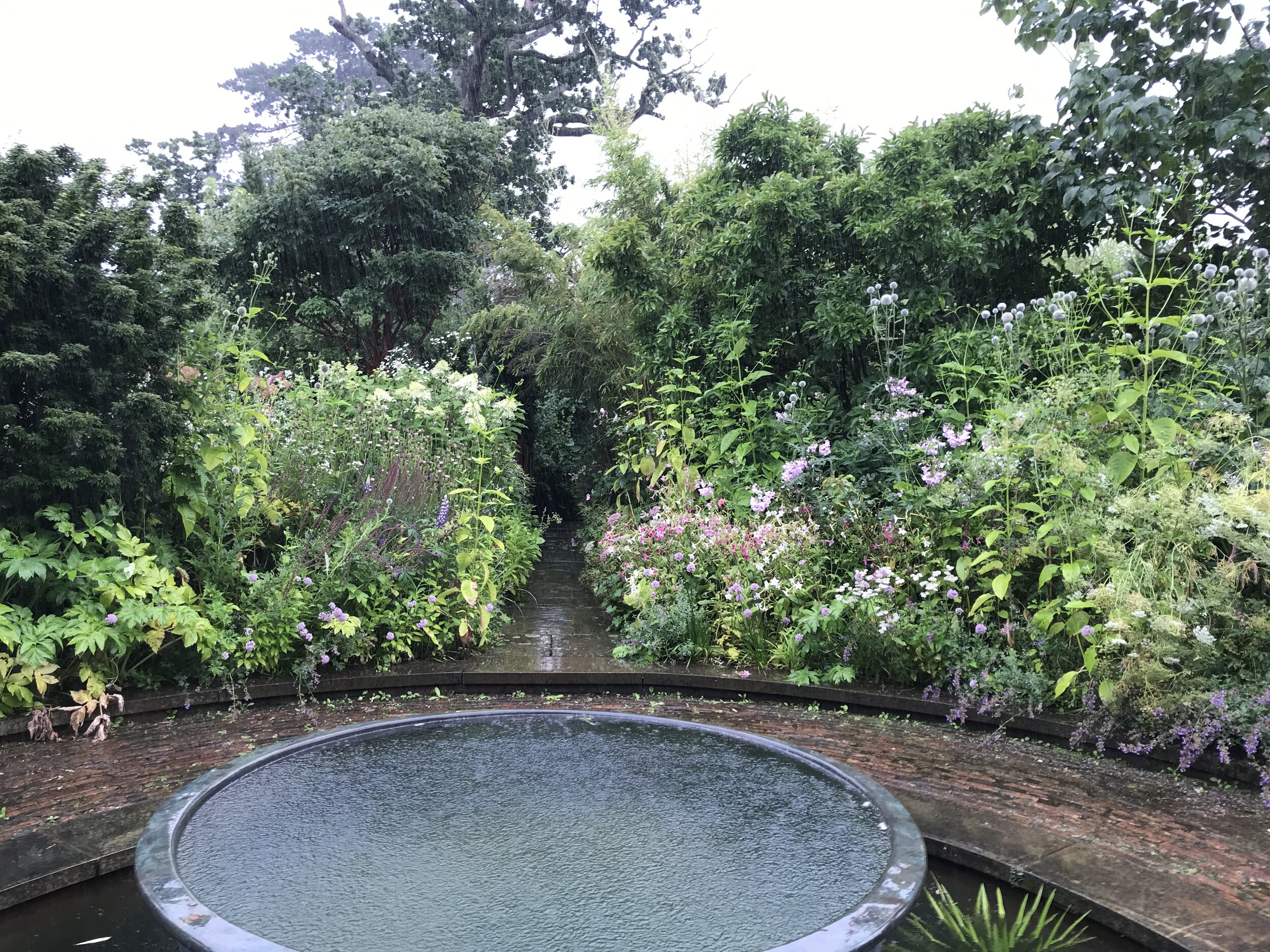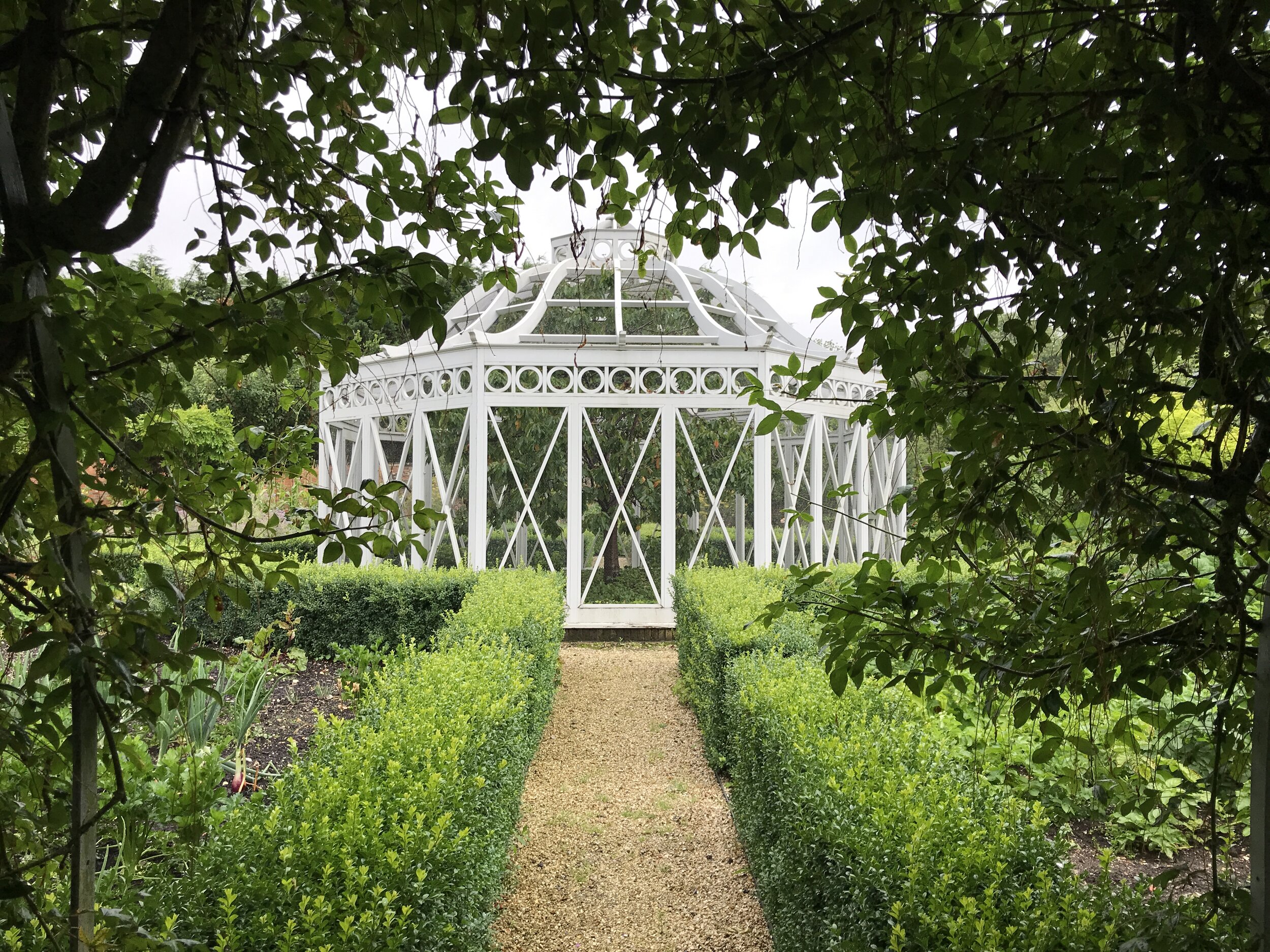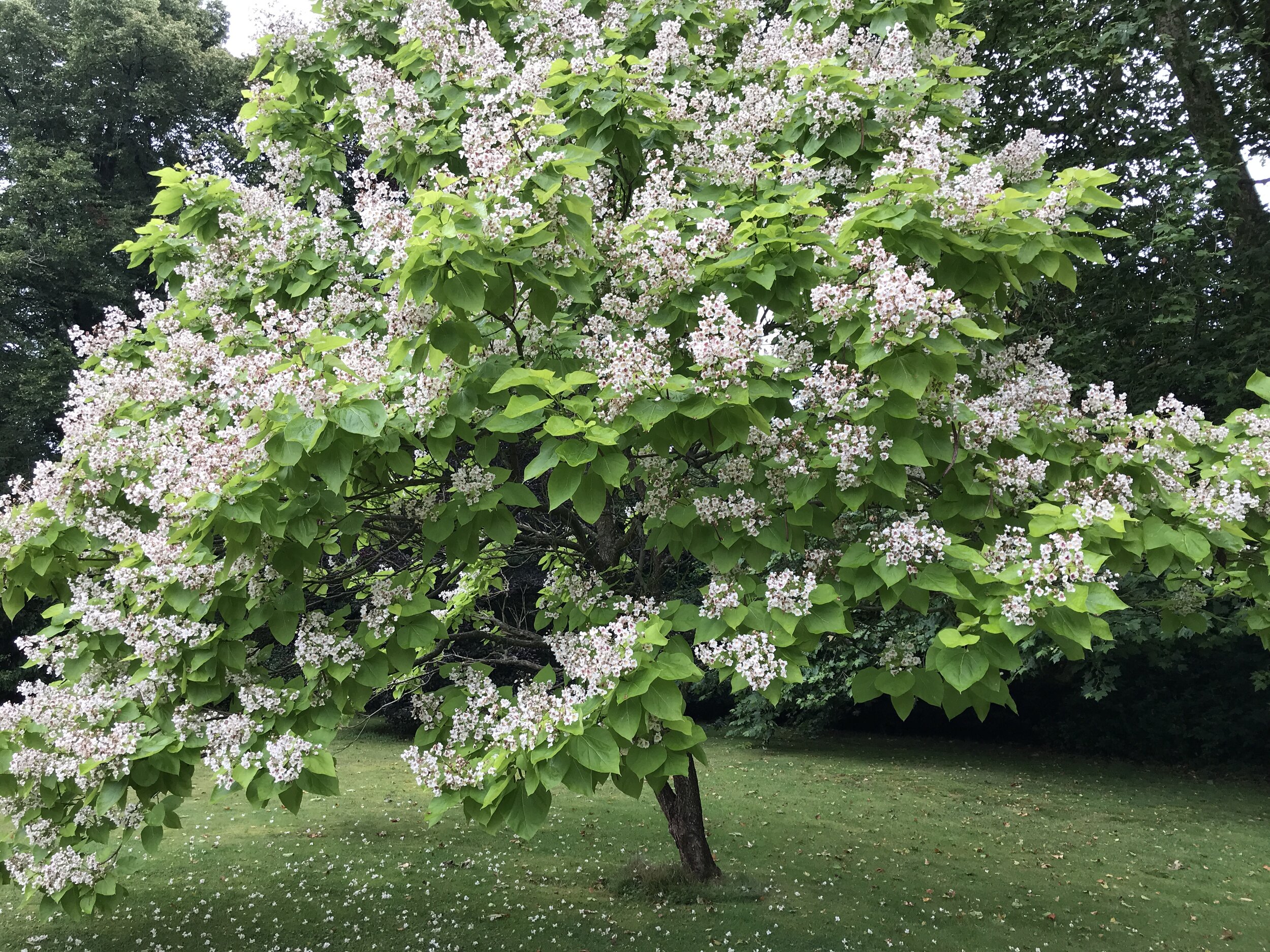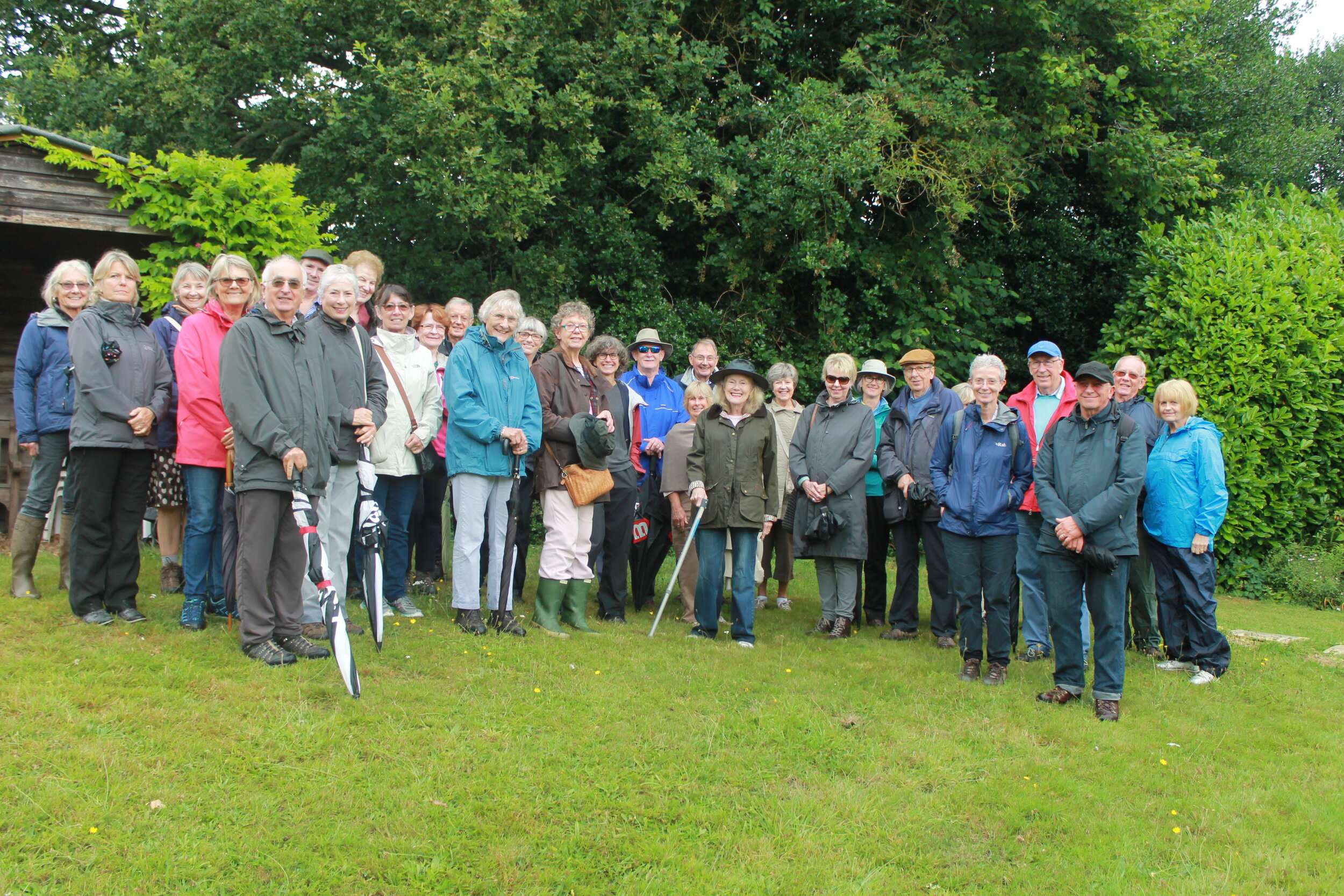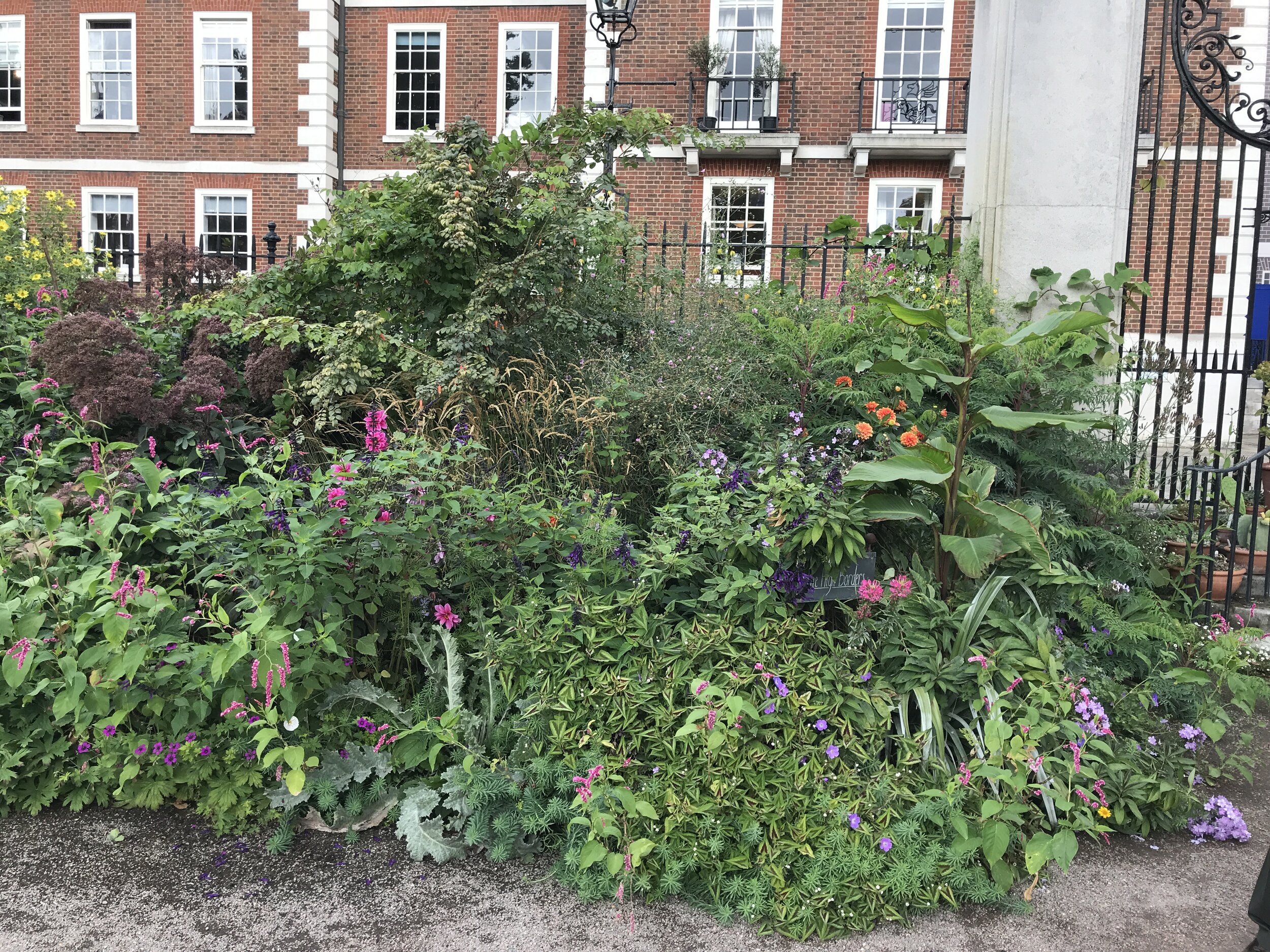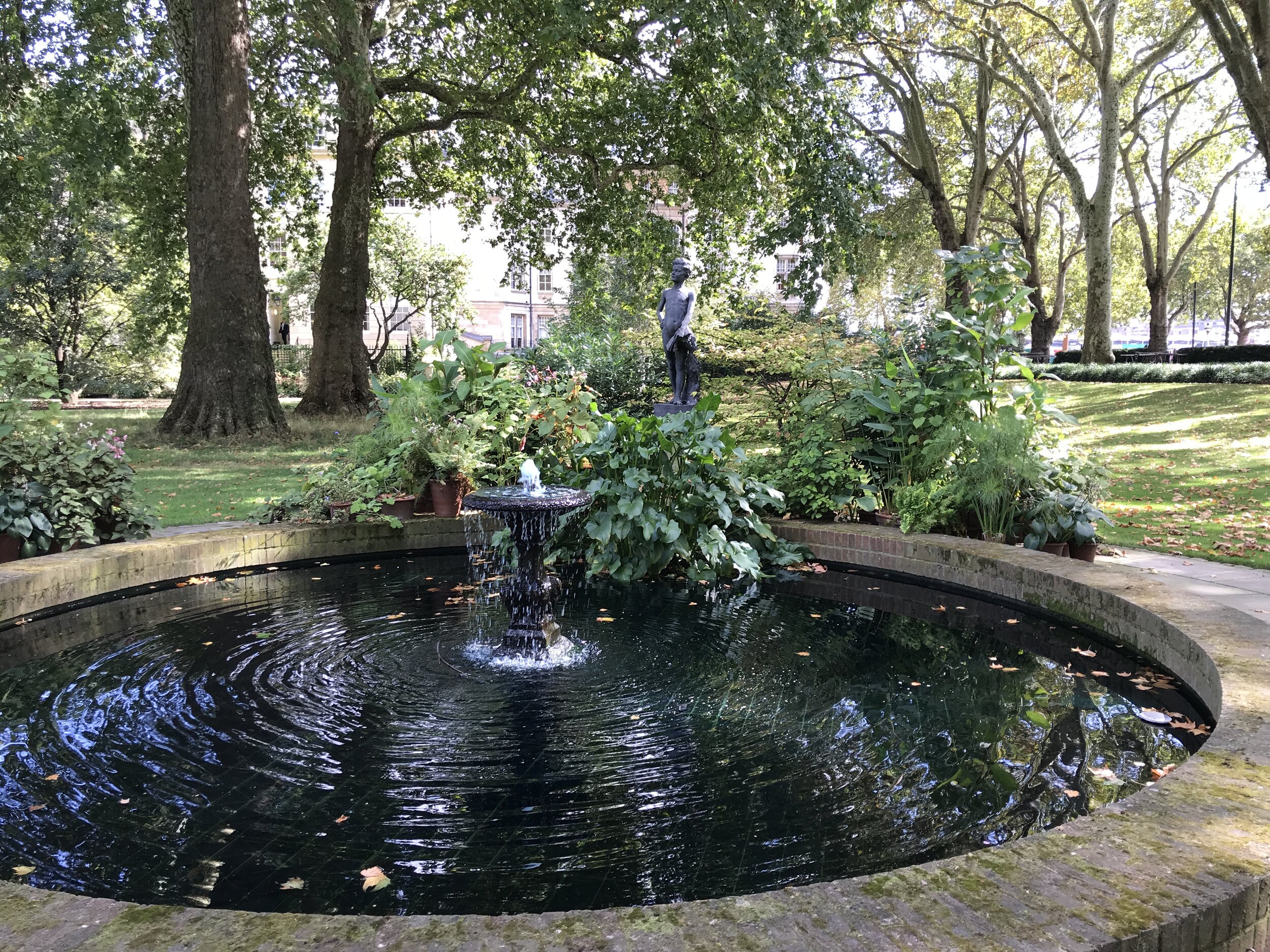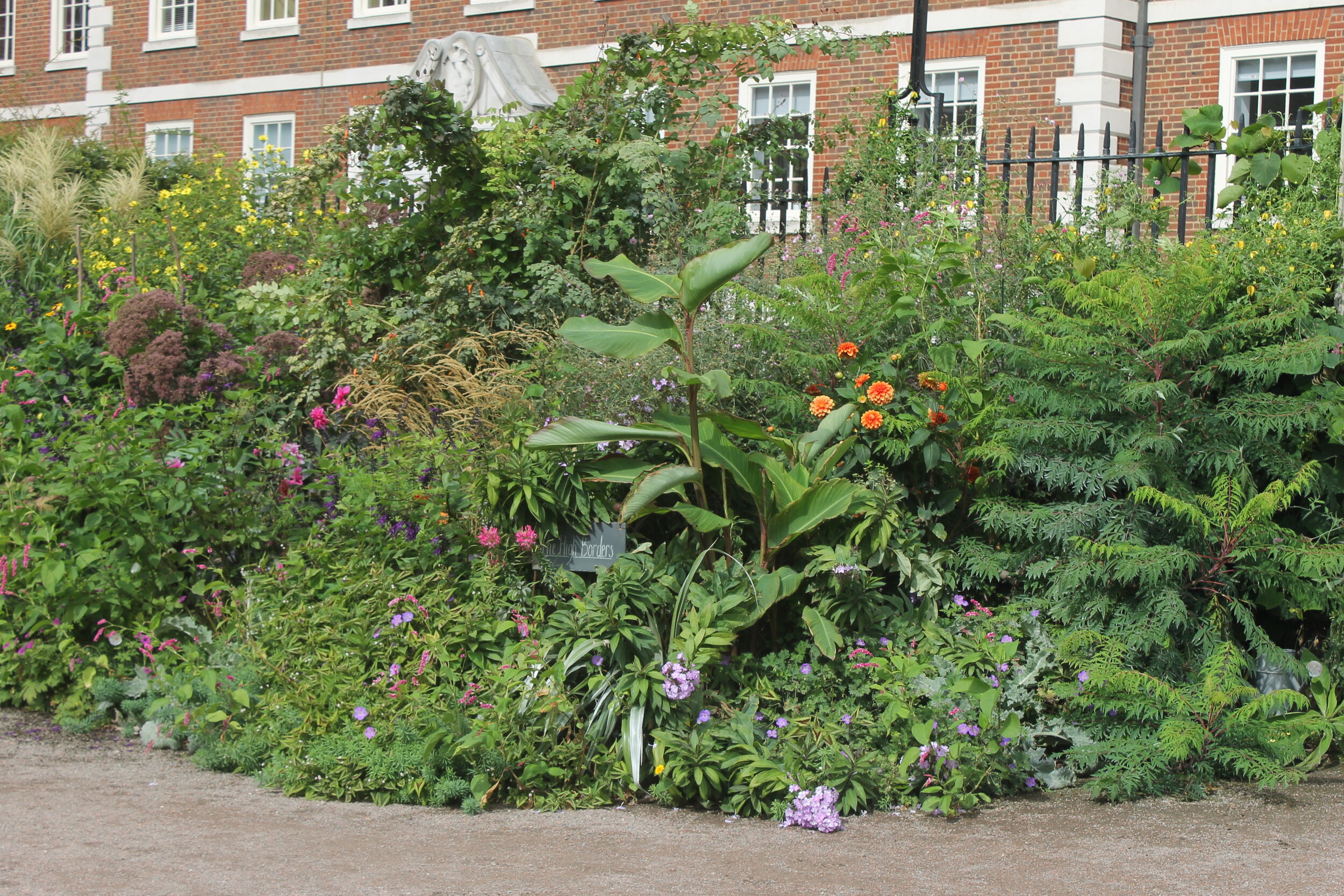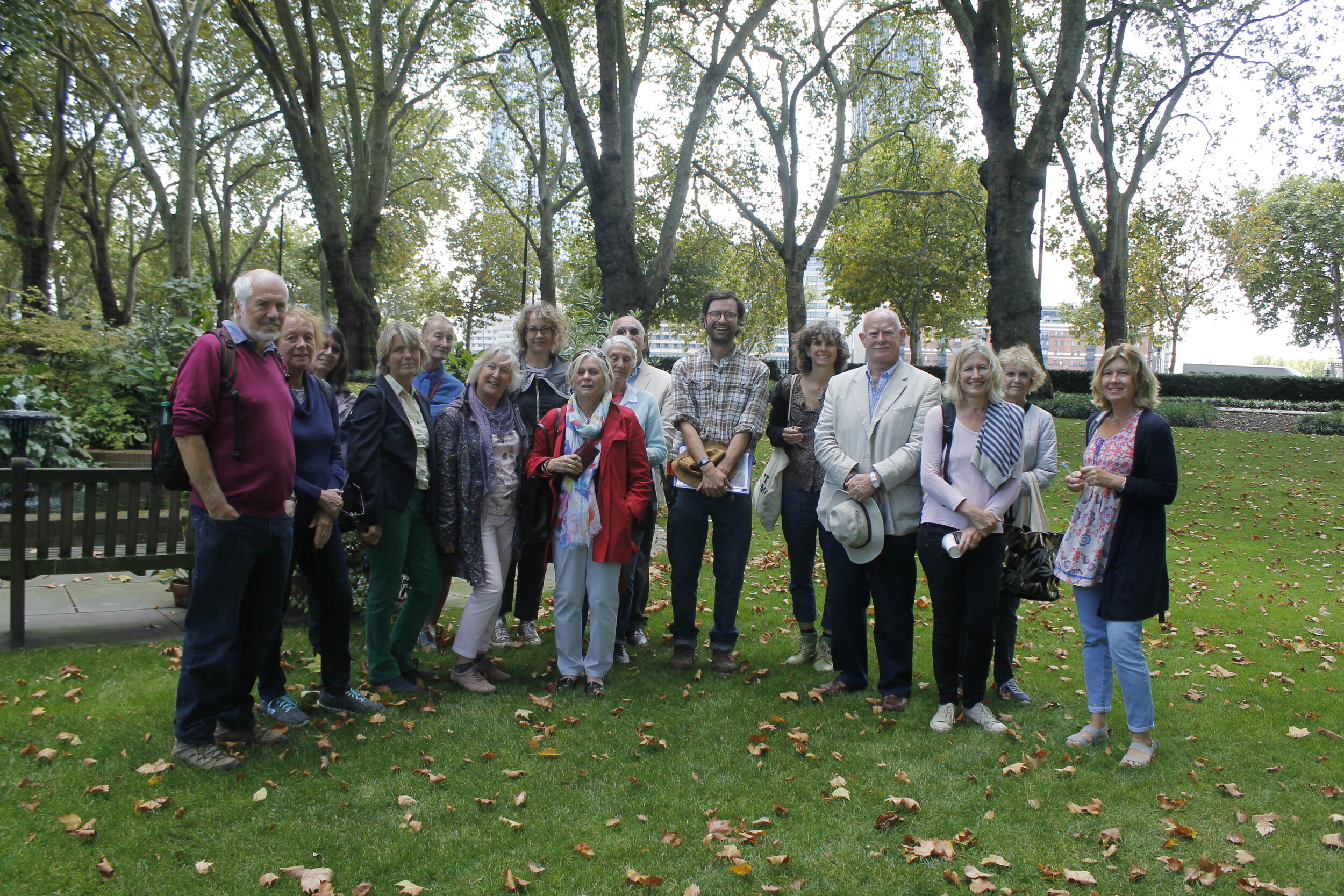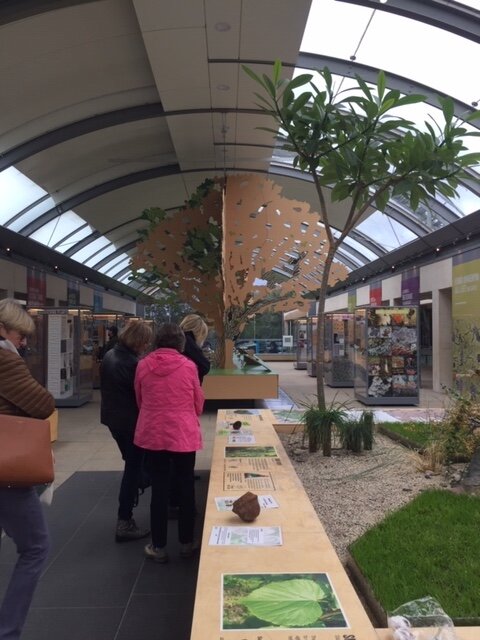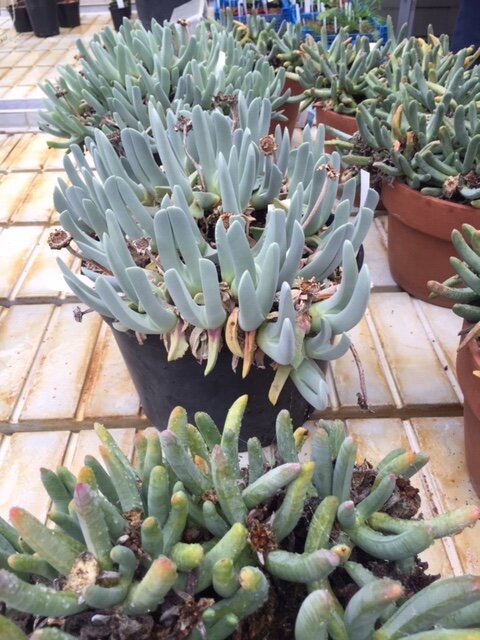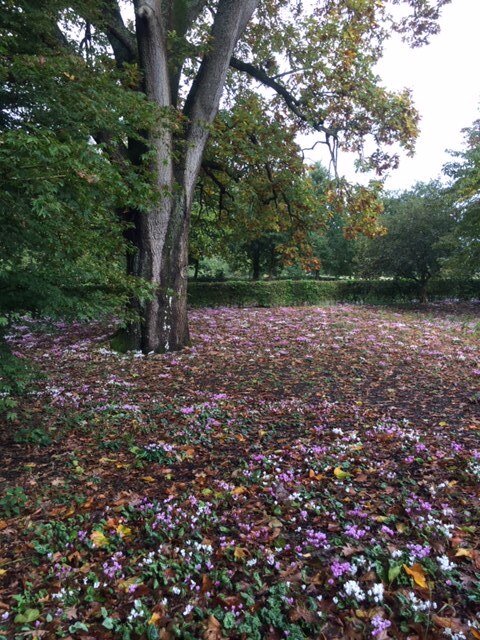GARDEN VISITS 2019
nymans, Haywards Heath
1 may 2019
Head Gardener Joe Whelan lead us on a magnificent tour of the gardens at Nymans in early May, allowing us to appreciate the full glory of the azaleas, rhododendrons, Davidia involucrata (handkerchief tree) and other specimen trees that were in bloom. The tour touched upon the evolution of the garden starting from Ludwig Messel and his family acquisition of the estate in the late 19th century.
Nymans is truly a house and garden for all seasons, with formal and informal garden areas surrounding the partial ruins of a historic mansion. Messel, with his extremely knowledgeable Head Gardener James Comber, created an Arts and Crafts-inspired garden where strong use of topiary contrasted with exotic plants from all over the world. Ludwig Messel's descendants, including his son Leonard and daughter-in-law Maud, continued to develop the garden in the early 20th century, turning it into one of the most beautiful and romantic gardens of Edwardian England. Upon Leonard Messel’s death in 1953, Nymans was bequeathed to the National Trust. The gardens, including the pinetum, rock and heath gardens and rose garden, have been slowly restored after significant damage following the Great Storm of 1987. Conservation work is ongoing with a clear focus on ensuring the garden can be managed effectively through climate change and the resulting more diverse weather conditions.
leonardslee gardens, horsham
1 May 2019
Leonardslee Gardens, established in 1801, covers 200 acres of a steep sandstone valley and is a Grade I registered Garden. The oldest part of the landscape includes a string of seven man-made ponds originally used to provide power for the Wealden iron smelting industry in the 16th and 17th centuries.
Head Gardener Ray Abraham was a font of knowledge and talked extensively about the massive restoration undertaken from July 2017 when Penny Streeter OBE acquired the property until its reopening to the public in January 2019. When the property was purchased essentially everything had become overgrown, the ponds derelict and many of the older trees dangerously damaged due to high winds, neglect and lack of ongoing maintenance. What ensued was an overwhelming task of restoration and cataloguing what had survived of the extensive collection of specimen trees and shrubs. In early May, we were overwhelmed by the bright, gaudy colours of the azaleas, rhododendrons, young Acer leaves and abundance of bluebells growing on all the slopes. The tour was highly informative and gave us a great appreciation for the world-class collection of plants that the gardening team is trying to preserve.
The trails along the string of ponds and the area of specimen Acers were certainly among the highlights. Definitely worth a return visit, taking time to saviour the sites along the way.
upton grey, Hampshire
18 June 2019
Many of you will have attended our AGM in December 2018 and heard first hand about Rosamund’s incredible discovery of an overgrown Gertrude Jekyll garden at her Hampshire home and her tireless pursuit restoring it to its former beauty. In 1984 Rosamund and her husband, John, decided to move from Chelsea to the countryside and they bought this neglected, derelict house and garden. After a chance meeting with Gilly Drummond of the Hampshire Gardens Trust, Rosamund discovered she owned what had once been a celebrated Jekyll garden, designed by Jekyll in 1908 for Charles Holme, a leading figure in the Arts & Craft movement. Rosamund was able to obtain copies of the original designs as they formed part of the Reef Point Collection held by University of California Berkeley and her journey of restoration began.
Since 1984 she has led the restoration of this five-acre garden. The garden at Upton Grey is believed to be the most complete and authentic Jekyll garden in existence and, understandably, hasover 3,000 visitors each year. She has written two books about the restoration project: Gertrude Jekyll’s Lost Garden The Restoration of an Edwardian Masterpiece (2000)and Gertrude Jekyll, Her Art Restored at Upton Grey (2013).
Brief introduction by owner, Ros Wallinger and then free to explore garden at leisure.
west green house gardens, hampshire
18 june 2019
West Green House Gardens has been creatively designed over two decades by Marylyn Abbott, a renowned Australian garden designer. The gardens surround an old manor house and combine a neo-classical style with a contemporary design that offers four seasons of beauty, contrast and stunning planting.
The Nymphaeum Fountain designed by architect Quinlan Terry, combined with a grand water staircase provides a focal point in the more formal garden. The Walled Garden, restored to its original design, has an alley of apples trees dividing the potager into areas for fruit, cut flowers, vegetables and perennials. Beyond the Walled Garden one can enjoy the Lakefield carpeted with fritillaries and daffodils in the spring, a Lake, Paradise Water Garden and contemporary Garden of the Five Bridges. These lead onto woodlands where the terraced Theatre Lawn sits, surrounded by tall hedges. In addition to creating a beautiful garden, Marylyn Abbott has built a thriving home for international opera – her other great passion.
Introductory talk by Head Gardener and then free to explore garden at leisure.
long barn, sevenoaks weald, kent
3 July 2019
Vita Sackville-West and Harold Nicolson purchased Long Barn, a 14th century Kentish barn on the edge of the Sevenoaks Weald, in 1915, shortly after their marriage. The creation of the gardens at Long Barn allowed them to hone their horticultural skills before moving onto Sissinghurst Castle 15 year later. After extensions to the barn, they focused on the grounds - terracing the sloping site and adding paths, stonewalls, hedges, trees and topiary to create ‘garden rooms’. The current owners, Lars and Rebecca Lemonius, have continued renovations to this garden and have carefully nurtured and reinstated the structure originally designed by Sackville-West. Long Barn is a Grade II registered garden.
Rebecca gave an incredibly interesting potted history before we set off to explore the beautiful gardens at Long Barn. As you walk around the vast garden, divided into garden ‘rooms’ thanks to extensive hedging and terracing, one is struck by the magnificent views to the south and the key role that the avenue of Yew sentinels plays in rooting the garden to its surroundings. The terracing and formal hedging hold the entire garden together. From the main terrace steps lead to a mature box parterre and a long sloping rose walk with further levels leading to the Pleasaunce Lawn and the Dutch garden (believed to be laid out to a design by Lutyens). There was truly so much to take in that one could have stayed for days and still found more to relish in the garden. For more information about Long Barn do read Rebecca’s article in our September 2019 newsletter.
great comp garden, kent
3 july 2019
Great Comp Gardens consist of seven acres of beautiful and unusual plants surrounding a 17th century manor house. The site of Great Comp, originally knows as Camp de Wrotha (meaning campus or field of Wrotham) dates from the 13th century. The original 700-acre estate was owned by the Lambarde family and the large country manor house was built in 1597 by Sir John Howell. One notable owner of the estate was Mrs Frances J Heron Maxwell, a suffragette and campaigner for women’s sports. She was a friend of Vita Sackville-West who lived nearby. The garden, as we know it today, owes its design, planting and quirky personality to Roderick and Joy Cameron, who purchased the estate in 1957. They built a collection of rare and exotic plants, opening the garden to the public in 1968. Great Comp celebrated its 50th anniversary in 2018.
Our tour of these remarkable gardens focused on the more notable features such as the Italian garden, romantic follies / ruins and the beautiful woodlands walks that feature some absolutely stunning specimen trees and shrubs. The timing of our visit also meant that the extensive salvia collection, punctuated by ornamental grasses, was looking particularly spectacular. Most of us went home with a few spare plants from the wonderful selection of salvias and other perennials on offer at the on-site nursery.
Malverleys Gardens, Newbury, Hampshire
30 july 2019
Malverleys is a newly created traditional English flower garden set within a private country estate. Begun in 2010, the 10-acre gardens have been designed by head gardener Mat Reese in conjunction with the owners. Mat, who trained at Kew and Wisley, worked with Fergus Garrett and Christopher Lloyd at Great Dixter for six years. Consequently, Great Dixter and the writings of iconic gardeners Christopher Lloyd, William Robinson and Vita Sackville-West have influenced his design at Malverleys.
The garden was breathtakingly beautiful (even seen through vast quantity of raindrops) and looks as if it has always been there with statuesque specimen trees, formal hedges and abundant planting as well as the use of high quality materials. The garden consists of abundantly planted terraces and long borders with lots of self-sowers; a stumpery with ferns and unusual shade plants; an exotic garden of tropical plants; and a topiary meadow. Tall yew hedges divided themed rooms, including: a cool garden; a hot garden; a rose-clad cloister garden; and a large pond garden that reflects the dynamic planting on all sides. The walled kitchen garden was most impressive with its extensive collection of fruit, vegetables and cut flowers borders, alongside a white garden with four small fountains and extensive greenhouses.
Sandleford Place, Newbury, Berkshire
30 July 2019
Owner Mel Gatward couldn’t have been more welcoming to a very bedraggled group of SGT members. The rain abated for most of our visit, allowing us to enjoy her beautiful garden positioned alongside the banks of River Enborne. 2019 marked the 20th anniversary of Sandleford Place being open through the NGS. Sandleford is a plantswoman’s garden, having been developed by Mel over the past 30 years and consists of 4 acres of exuberant planting ranging from shrubs to mixed borders.
The garden contains an old walled garden with wide borders and many climbers for year-round interest. We enjoyed the woodland walk, walled garden with its long herbaceous borders and kitchen garden as well as the wild flowers that adorn the meadows and banks of River Enborne, which flows through the garden. The Cornus Kousa near the front door was awash with blossom and was certainly the highlight of many fine trees that envelop the more formal parts of the garden. Tea and cake in the conservatory, accompanied by Mr Gatward on the piano, were very much appreciated after a long, rainy day out admiring gardens.
inner temple, london
4 September 2019
Within Inner Temple lies a hidden gem of a three-acre garden – a tranquil oasis in the busy city of London. Famed for its spectacular mixed herbaceous borders and textured shade planting, it sweeps towards the river with spacious lawns and a collection of specimen trees. The gardens have a rich history having started off as an orchard in medieval times, and by the 14th century there are several mentions of its roses. In 1591 a more formal design was imposed, with a top terrace and walks. Over the ensuing centuries the garden underwent extensive modifications but today echoes of its past can still be seen in its layout and in a number of garden features, such as the highly decorative wrought iron gates from c. 1730 and a Queen Anne sundial.
Guided tour with Head Gardener, Sean Harkin. The tour will last approximately 1 hour, after which we can enjoy the gardens at leisure.
Millennium seed bank & wakehurst place, Sussex
17 october 2019
Guided by Fran Wedderburn, our behind the scenes tour of the Millennium Seed Bank was a great success. After a brief introduction where we learnt of the work and research undertaken; Fran fielded all our questions as we toured the state-of-the-art facility. MSB is a world leader in plant conservation aiming to bank 25% of the wild species by 2020.
In the high tech labs we saw where the collected seed is stored on arrival; dried and cooled to maximise germination rates. The seeds are then cleaned by hand before being further dried, labelled and stored at -18C in secure seed vaults. Periodically and dependant on the seed variety; a sample of the seeds are tested for germination to ensure that the stored seed is still viable.
The work of the MSB also includes ‘saving’ extinct plant species. Cylindrophyllum hallii (a type of cactus) from South Africa is now extinct in the wild but seed collected has been successfully germinated at MSB and healthy plants grown. Seed is now being collected from these plants and sent to botanical centres around the world to ensure the species is present in as many different geographical locations as possible.
The Wakehurst gardens were also a pleasure to visit with collectionsof birches, acers, Wollemi pines and gigantic redwoods and pretty Cyclamen hederifolium carpeting the ground under the trees.

